Os trabalhos e os dias
Galeria Lume, São Paulo, 2025
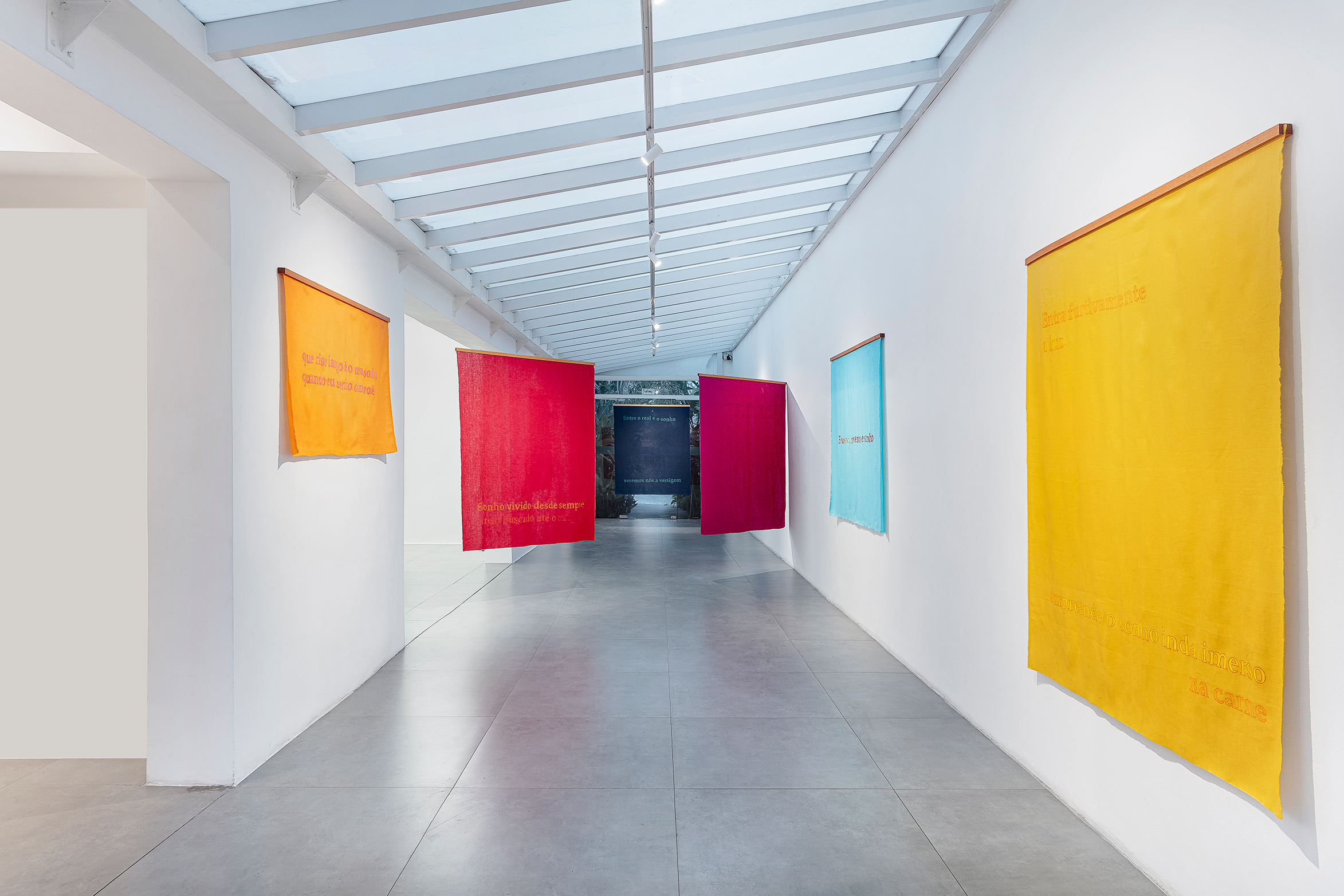
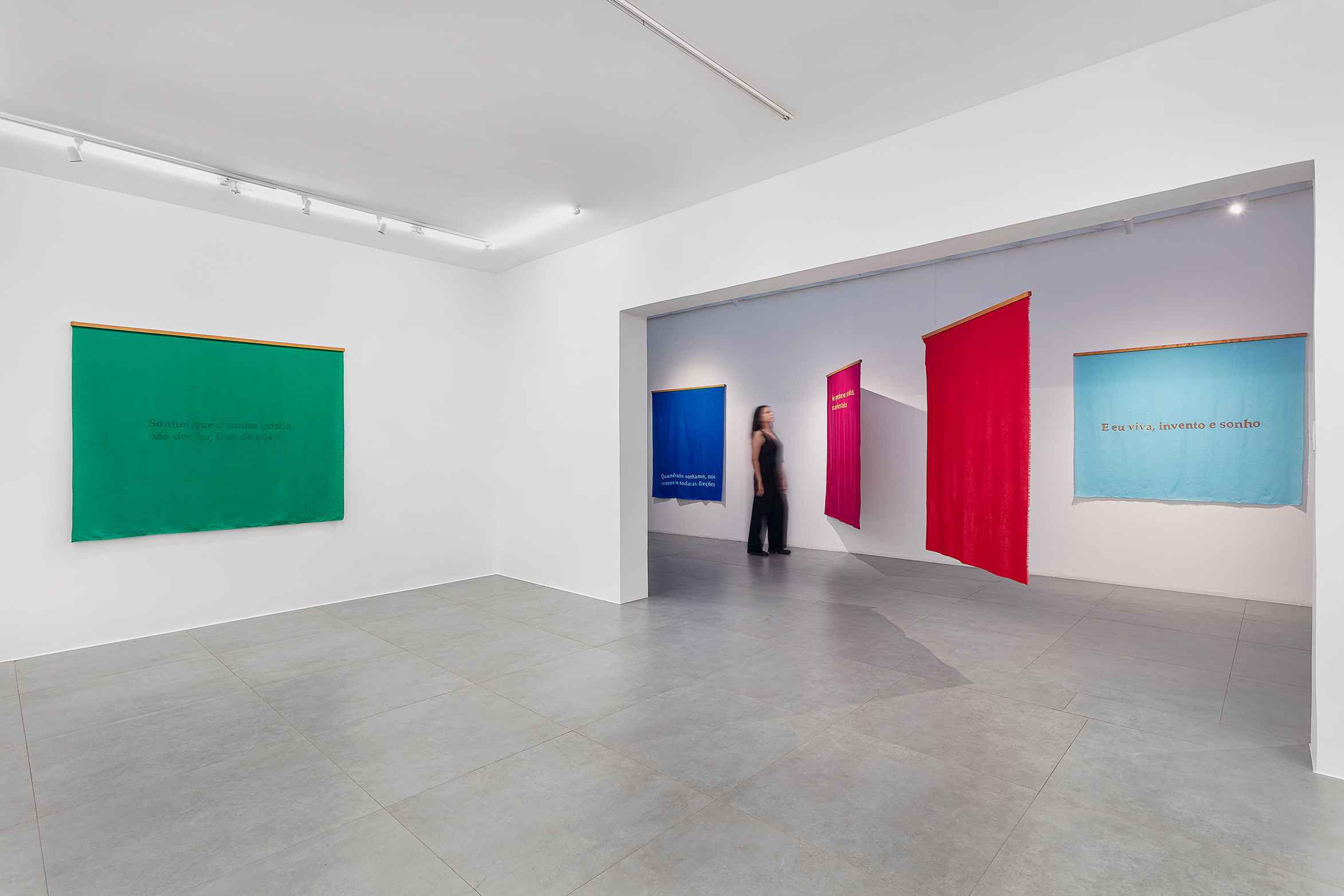
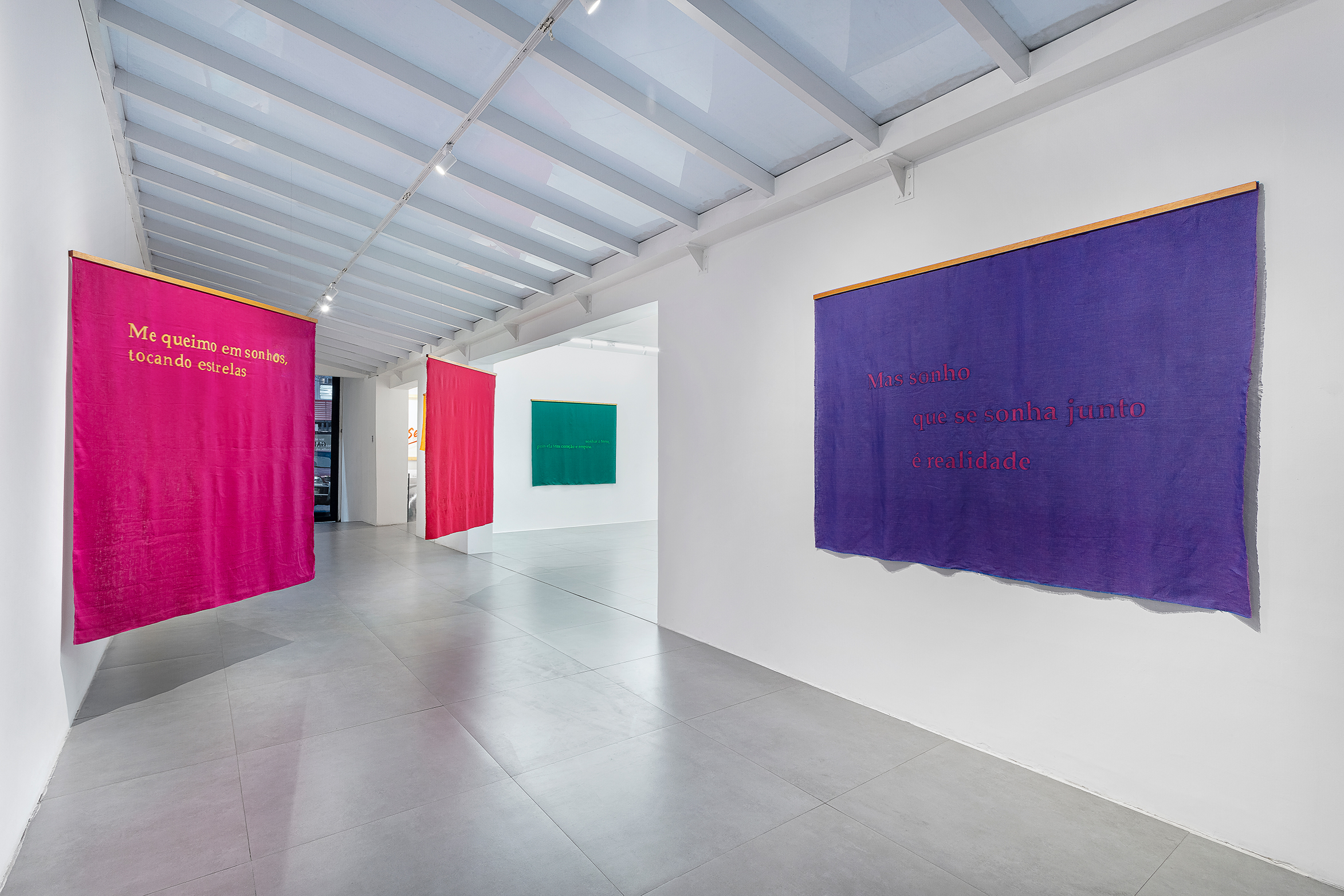
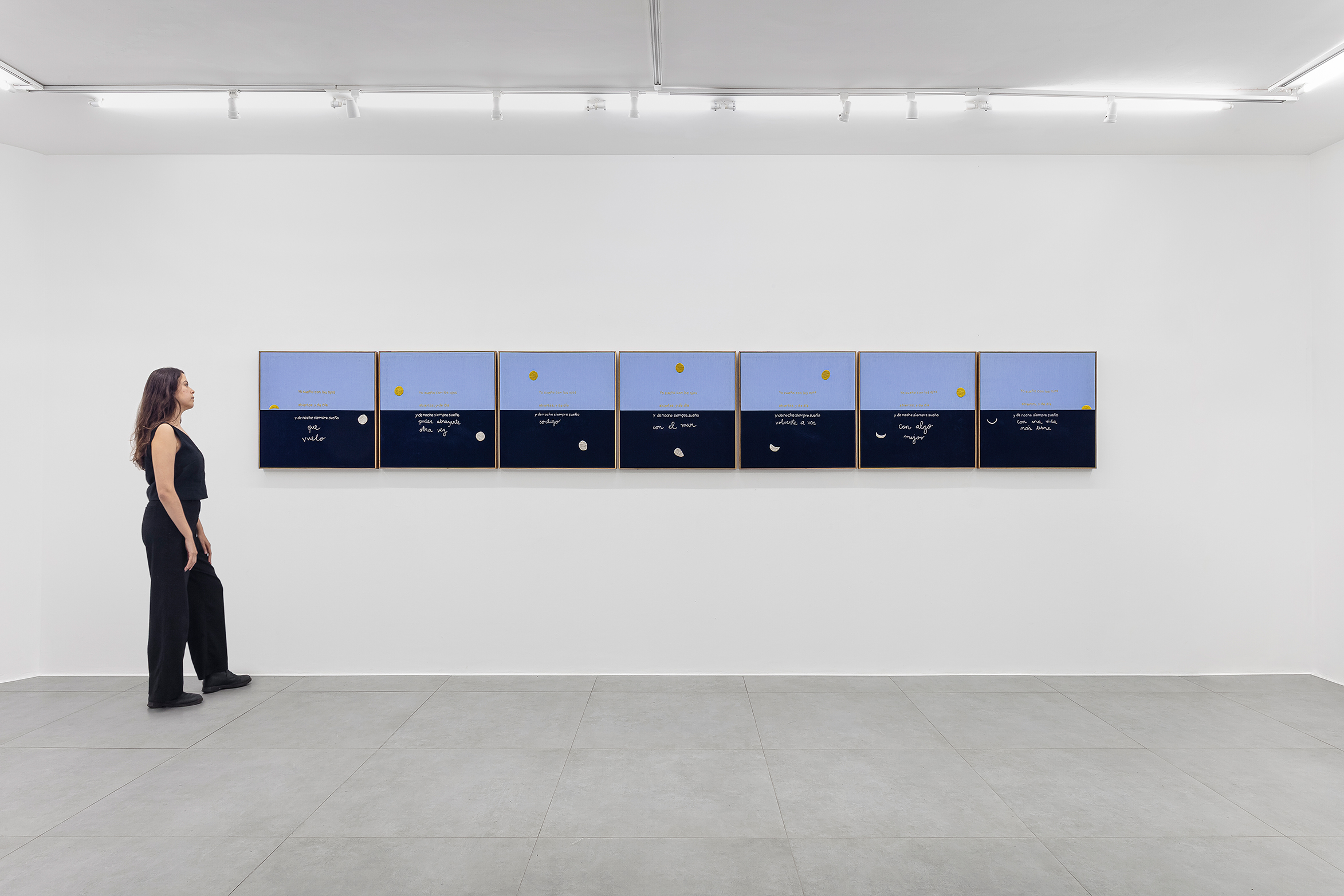
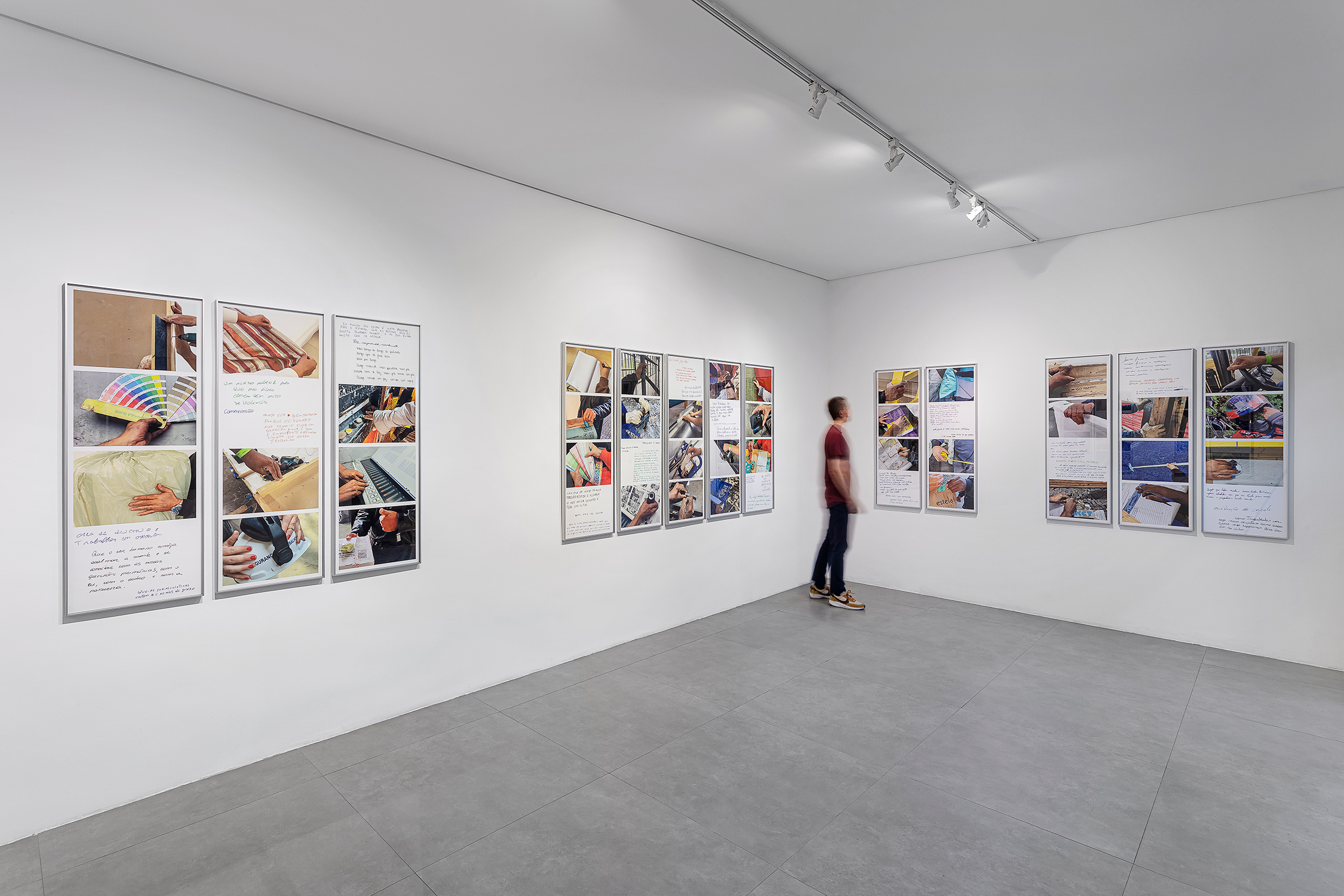
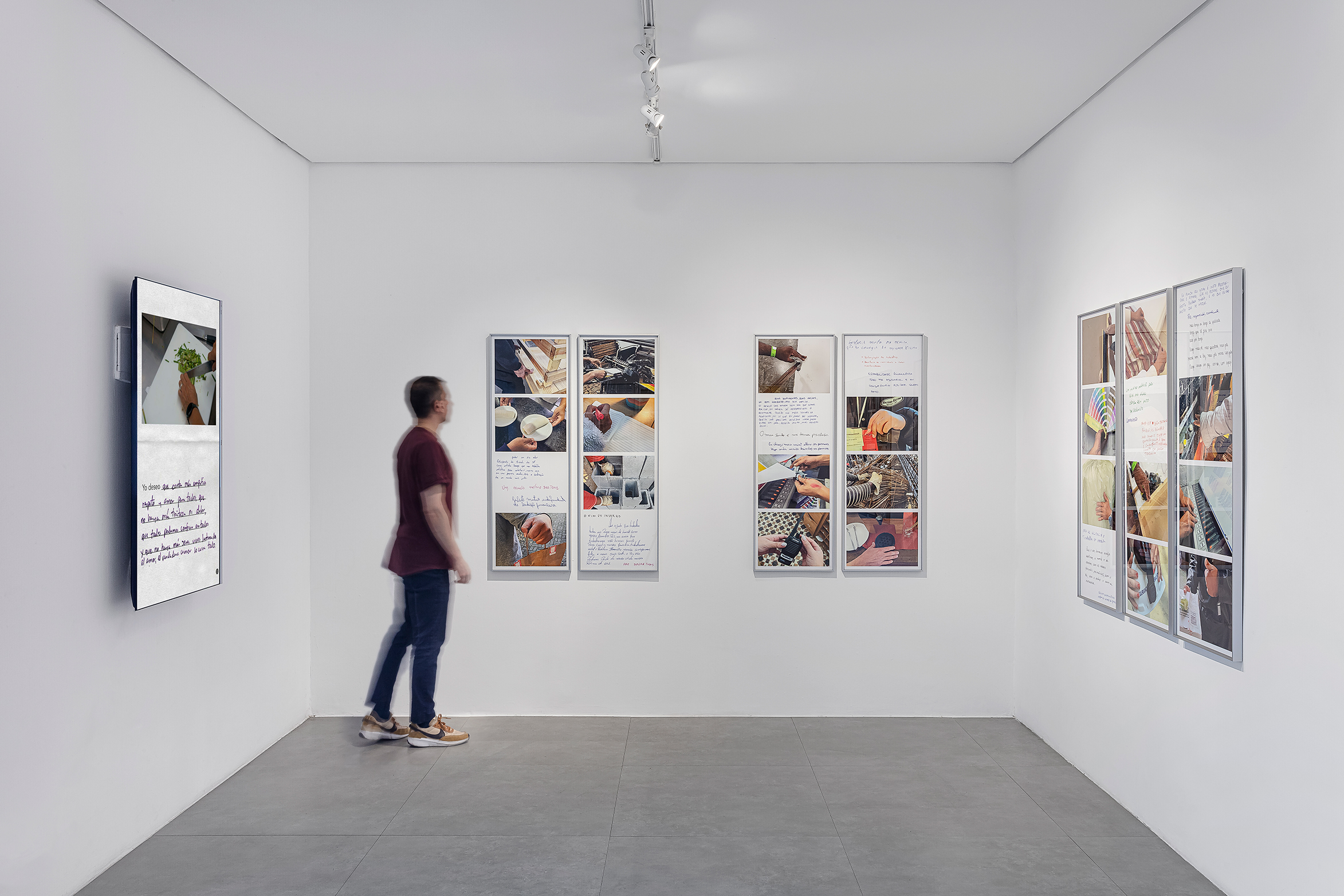
Zero Tolerance Silver Clouds
13a Bienal do Mercosul, Porto Alegre, 2022
XVI Bienal de Cuenca, Cuenca, 2023
Installation | Metal structure, Mylar balloons, fans, air and helium gas
Instalação | Estrutura metálica, balões de Mylar, ventiladores, ar e gás hélio
The installation Zero Tolerance Silver Clouds connects the American immigration policy “Zero Tolerance” to the installation Silver Clouds (1966), by Andy Warhol. In 2018, images of the detention center in Texas shocked the public by showing approximately 2 thousand migrant children imprisioned and separated from their families. In a barred space, children used silver blankets made with the same material as that used for Andy Warhol’s ballons.
“There is a real sense of liberty that can be felt among people that play with the silver clouds (…). The silver clouds show audiences that life can be fun, spontaneous and exciting especially when one is willing to explore other avenues and possibilities that are not grounded in rules and regulations.” ︎︎︎
The “American Dream”, national ethos of the US, sets ideals in which freedom includes the opportunity for prosperity and success, an upward social mobility for the family and children, achieved through hard work in a society with few barriers. Evoking an icon of contemporary art, the piece contrasts these ideals with the actual migration policies of the country.
A instalação Zero Tolerance Silver Clouds conecta a política estadunidense de imigração “Tolerância Zero” com a instalação Silver Clouds (1966) de Andy Warhol. Em 2018, as imagens de um centro de detenção no Texas chocaram o público ao mostrar aproximadamente 2 mil crianças migrantes presas, separadas de suas famílias. Em um espaço gradeado, crianças usavam cobertores prateados feitos do mesmo material utilizado por Warhol nos balões sua obra.
"Há uma verdadeira sensação de liberdade que pode ser sentida entre as pessoas que brincam com as nuvens prateadas (…) elas mostram ao público que a vida pode ser divertida, espontânea e emocionante, especialmente quando se está disposto a explorar outros caminhos e possibilidades que não estão fundamentados em regras e regulamentos."︎︎︎
O “sonho americano”, ethos nacional norteamericano, estabelece ideais em que a liberdade inclui a oportunidade de prosperidade e sucesso, uma mobilidade social ascendente para a família e os filhos, alcançada através de trabalho duro em uma sociedade com poucas barreiras. Evocando un ícone da arte contemporânea, a instalação confronta esses ideais com as reais políticas migratórias nos EUA.
Obra produzida para a 13ª Bienal do Mercosul em 2022 e XVI Bienal de Cuenca em 2023

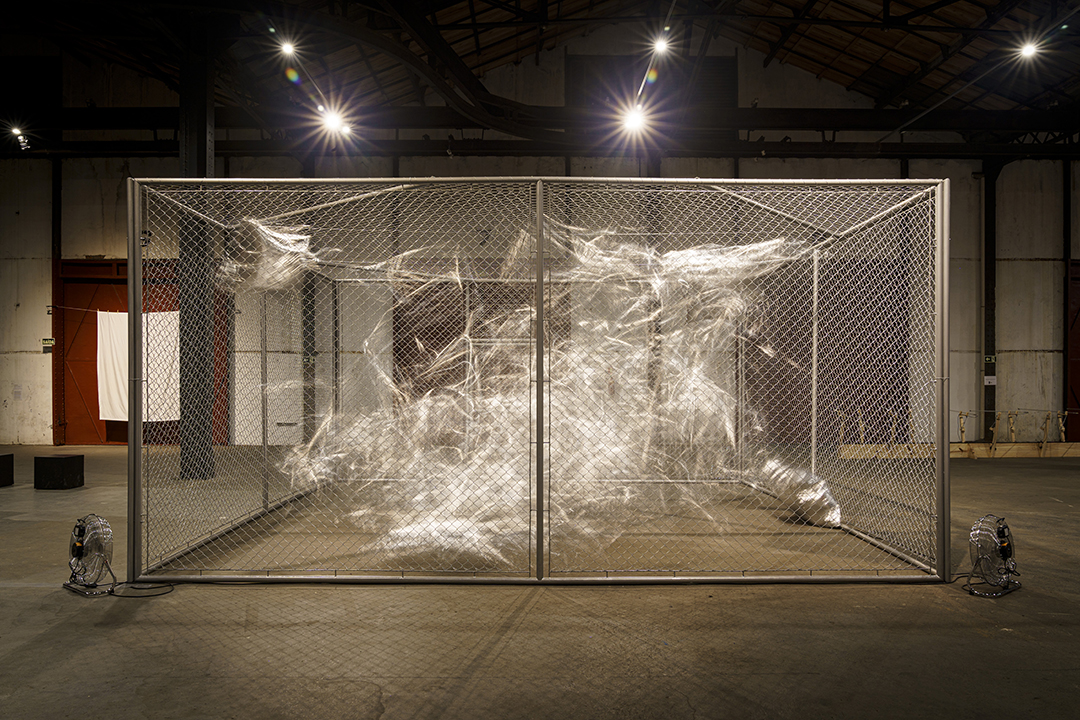

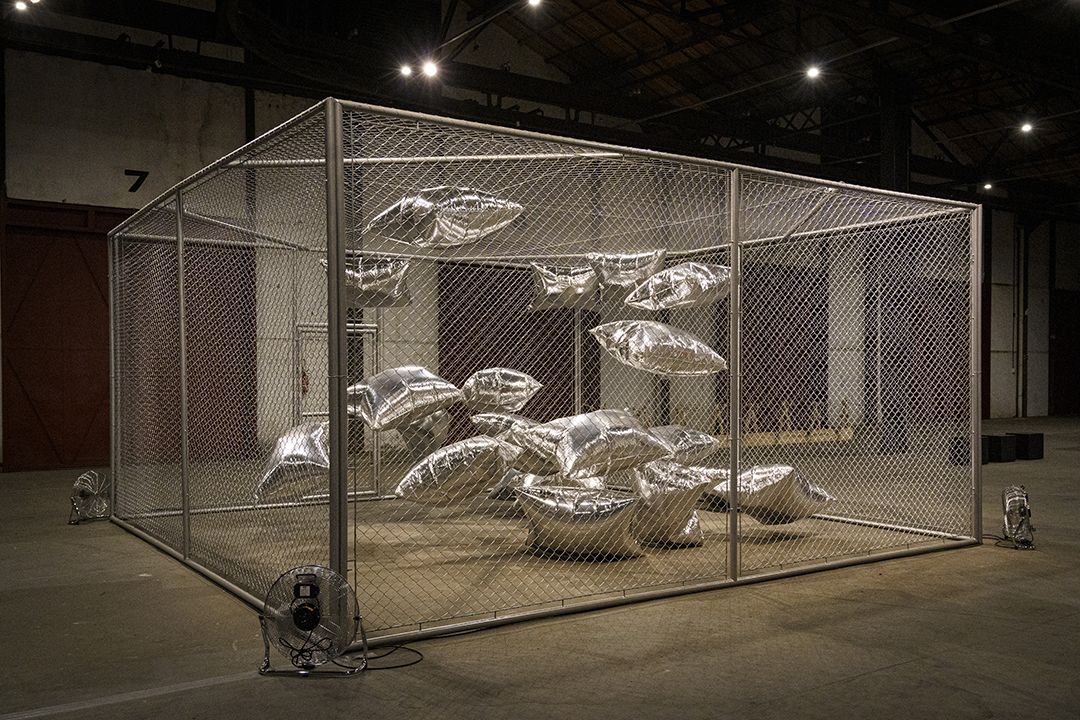
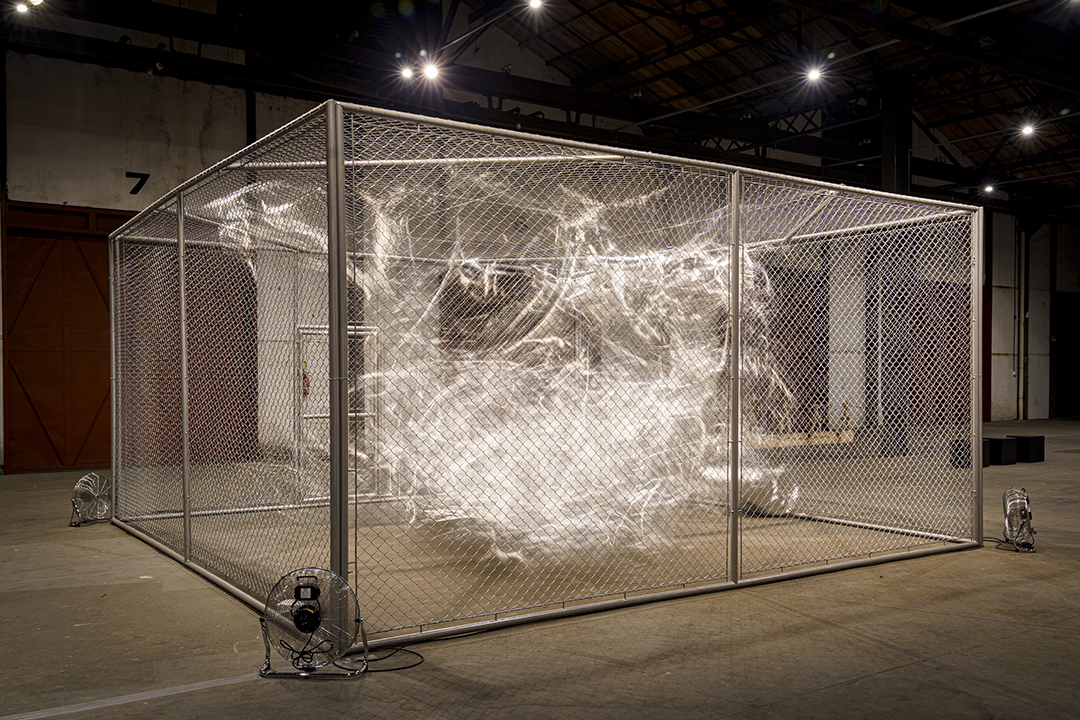





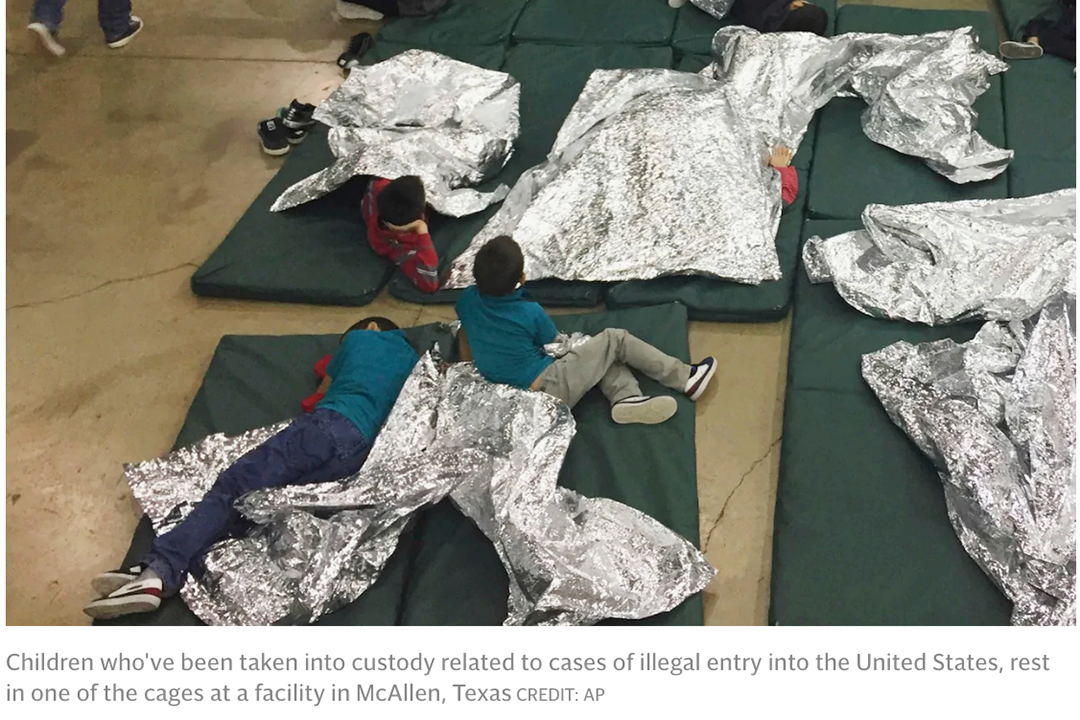
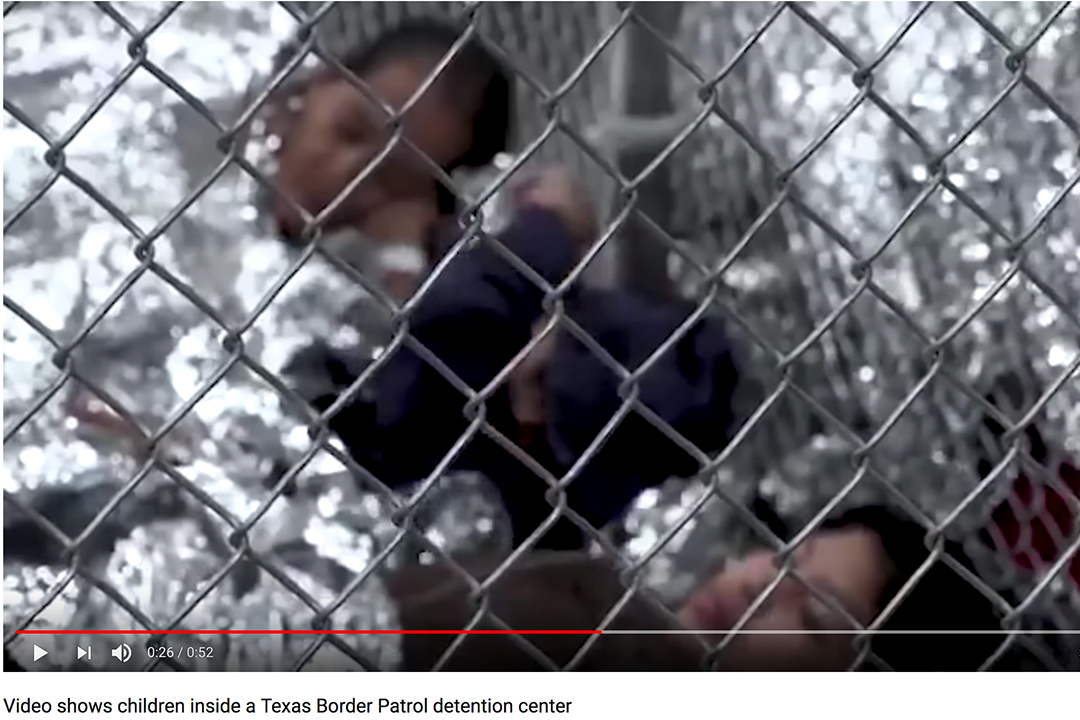
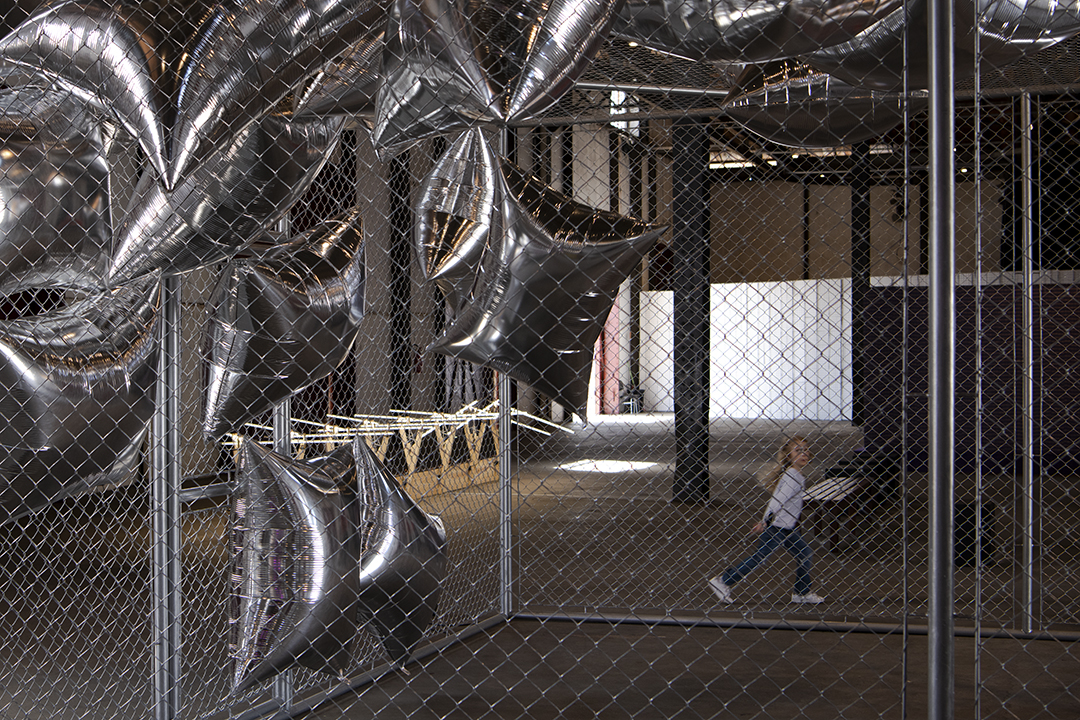


Diálogos contemporâneos: Marilá, Willys, Lothar
Instituto de Arte Contemporânea, São Paulo, 2022
“What would be the possible entrances to a collection formed of parts as different as those of Instituto de Are Contemporânea - IAC? Which documents, notes or projects from the institution's collection are revealed to the public and which are those that must remain hidden from this outside look, enclosed in pH neutral folders and archival boxes? What are the possible relations between these documents, remnants of a prosaic, objective and everyday existence, and the works of the artists who are their authors? And finally, what is the possibility of establishing a true dialogue between these multiple history records and the production of a contemporary artist? Here are some of the questions posed on the occasion of the exhibition Contemporary dialogues: Marilá, Willys, Lothar, premiere of this exhibition program developed by the institution. Not seeking answers, certainties or statements, it was preferred here to raise possible relatedness and elective affinities from a lyrical set of possibilities. When seeking the emotional power of these collections in close relation to Marilá Dardot's production, we sought to free documents and works belonging to the Institute collection from it’s usual and vital expressive dryness, shifting them from the field of archives to the universe of sensitive relief.
By juxtaposing a series of works by the artist, some of which were produced during the confinement of the long and collective pandemic journey and deeply related to it (particularly the group of works in the series Pinturinhas meditativas with its obsessive filling logic), with documents, writings and works by Lothar Charoux and Willys de Castro, some lines of associative continuity seem to arise: an obsession with the form and the written word, the organization of the line's chaos or its almost abandonment, a biased sense of humor (and little known), a poetry made of fragments and glances, as well as a certain relationship between their three-dimensional fetishes, auxiliaries and the ultimate result of the production of these artists, cores of contained energy that, when related to other portions of their works, acquire new and stimulating expressive suggestions. The installation Reverso (sala fundo), produced by Dardot specially for this exhibition and placed in the building's basement, comments on the particular doing of the exhibition and the unveiling of the previously enclosed documents of IAC collections and the protective enclosures they inhabit on a daily basis. Mirrored and negative image of one of the exhibition rooms, Reverso (sala fundo) presents us, with poetic interventions of the artist, the envelopes and boxes used to store documents and objects now exhibited. By exposing what usually remains hidden, this exhibition sought to revive powers and stories, forgotten anecdotes, possible or desirable fictions, and dormant transversal relations between the artists, their works and documentation.”
Text by curator Giancarlo Hannud
“Quais seriam as possíveis entradas de um acervo constituído por partes tão díspares quanto as do Instituto de Arte Contemporânea? Quais os documentos, anotações, projetos e rabiscos de artistas que são revelados ao público, e quais os que permanecem velados do olhar desse mesmo público? Quais seriam as possíveis relações entre esses documentos, resquícios de uma existência prosaica, objetiva e cotidiana, e as obras desses artistas? E finalmente, qual a possibilidade de um verdadeiro diálogo entre esses múltiplos papéis e histórias e a produção de uma artista contemporânea? Essas são apenas algumas das perguntas que tentamos tratar na mostra Diálogos contemporâneos: Marilá, Willys, Lothar, sem buscar dar uma resposta definitiva a nenhuma delas, mas sim sugerir outras perguntas e possíveis linhas de continuidade. Ao reunir uma série de trabalhos de Marilá Dardot, alguns dos quais produzidos durante a pandemia de COVID e a ela profundamente relacionados, com trabalhos e documentos de Lothar Charoux e Willys de Castro de forma liricamente livre, algumas linhas de continuidade parecem surgir: uma obsessão pela forma, bem como seu quase abandono, um senso de humor enviesado, concreto e oblíquo, uma poesia de fragmentos e de olhares de relance, além dos próprios fetiches desses artistas, auxiliares de sua produção, núcleos de energia contida que ao serem relacionados com outras seções de suas produções adquirem novas e instigantes sugestões expressivas. Ao indagar a própria natureza dessas coleções buscamos libertar os arquivos e fundos pertencentes ao IAC de sua costumeira e necessária aridez expressiva, expondo o que permanece escondido para reavivar histórias e relações transversais de artistas diametralmente opostos em suas ambições.”
Texto do curadorGiancarlo Hannud
Crítica de Paula Alzugaray, revista Select︎︎︎
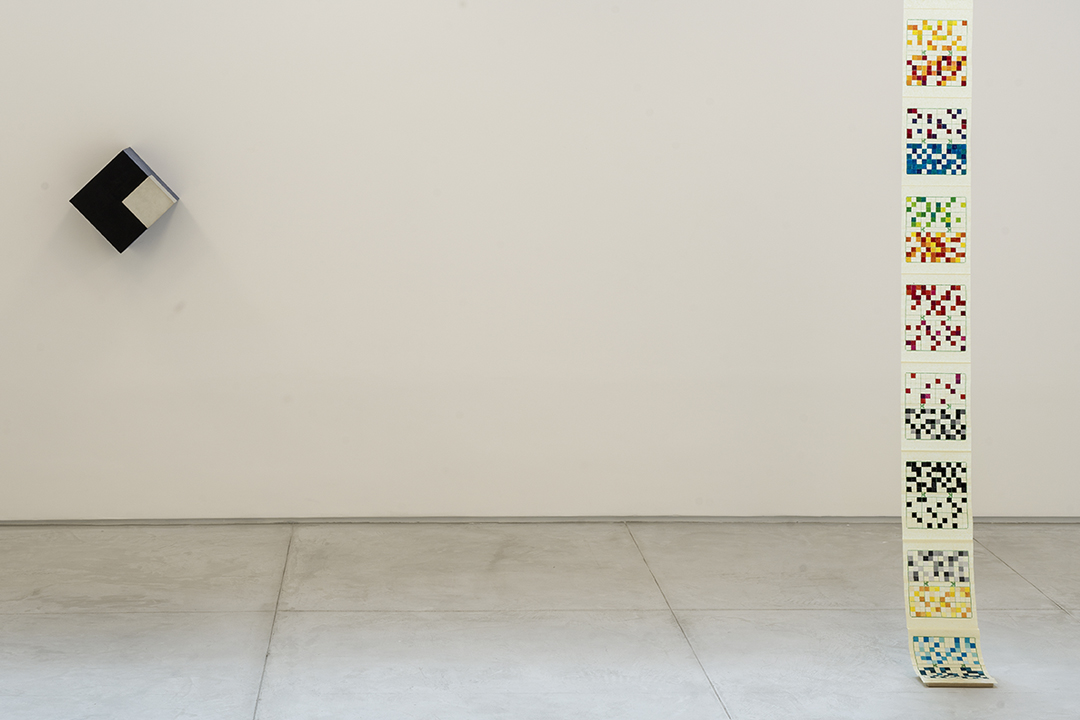
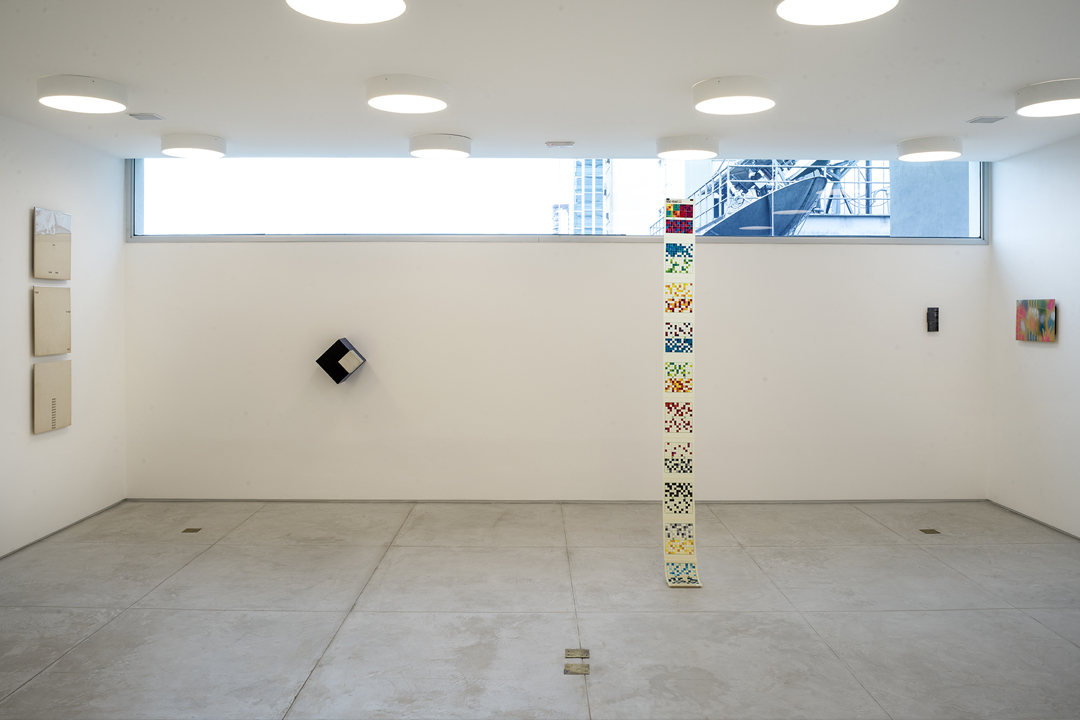


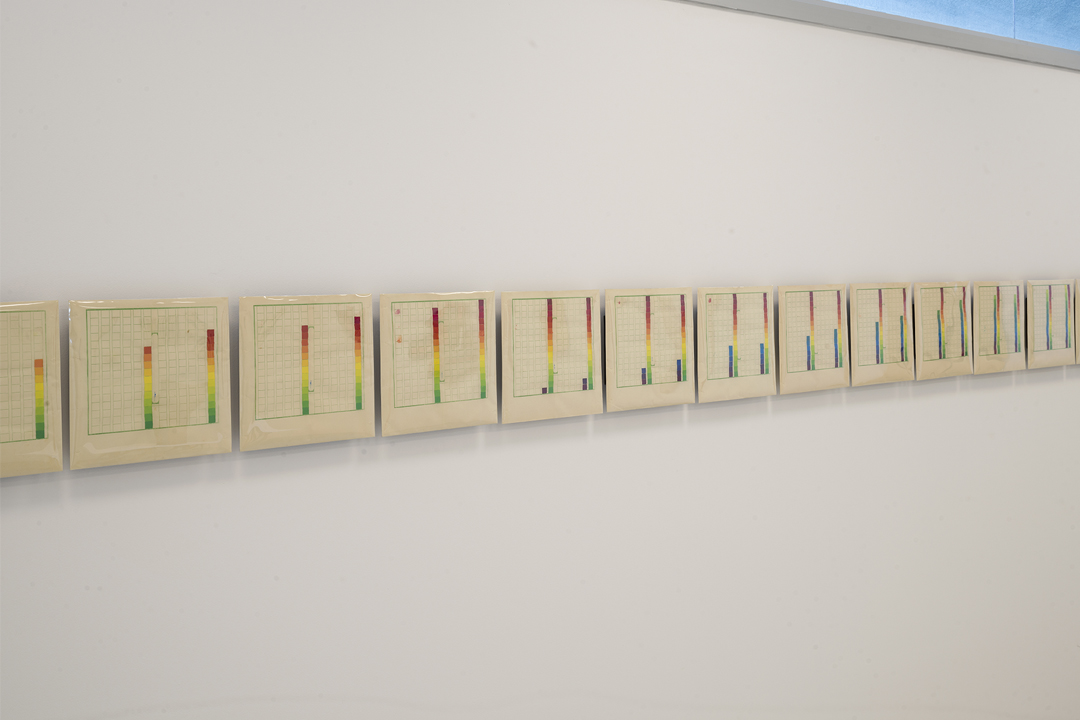


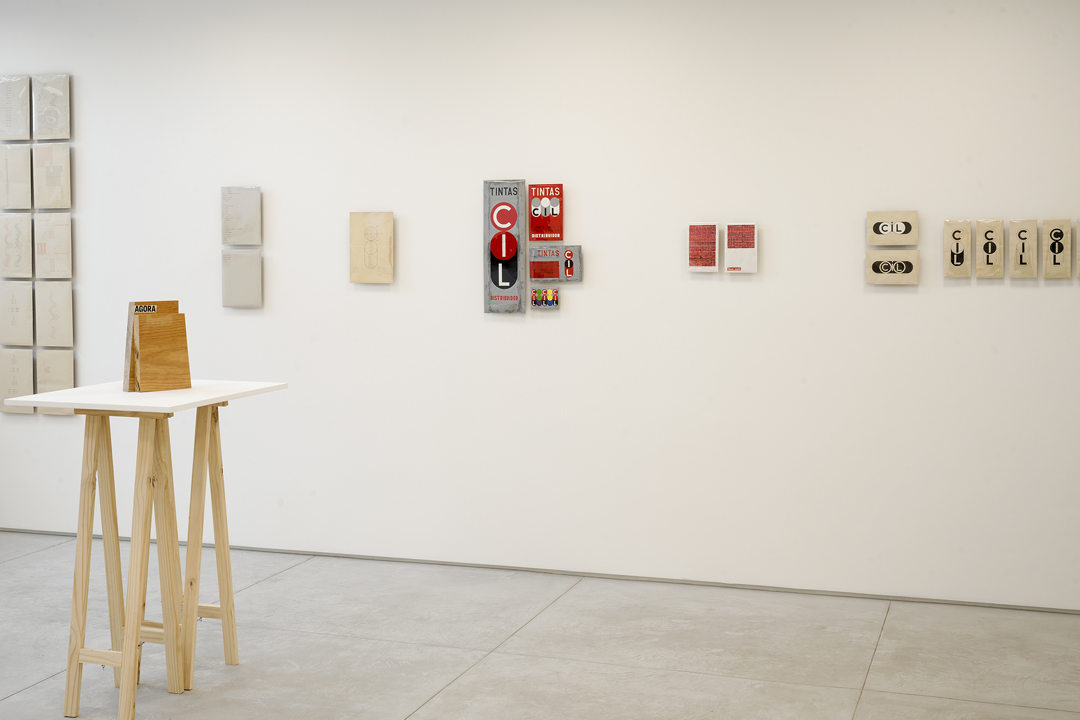
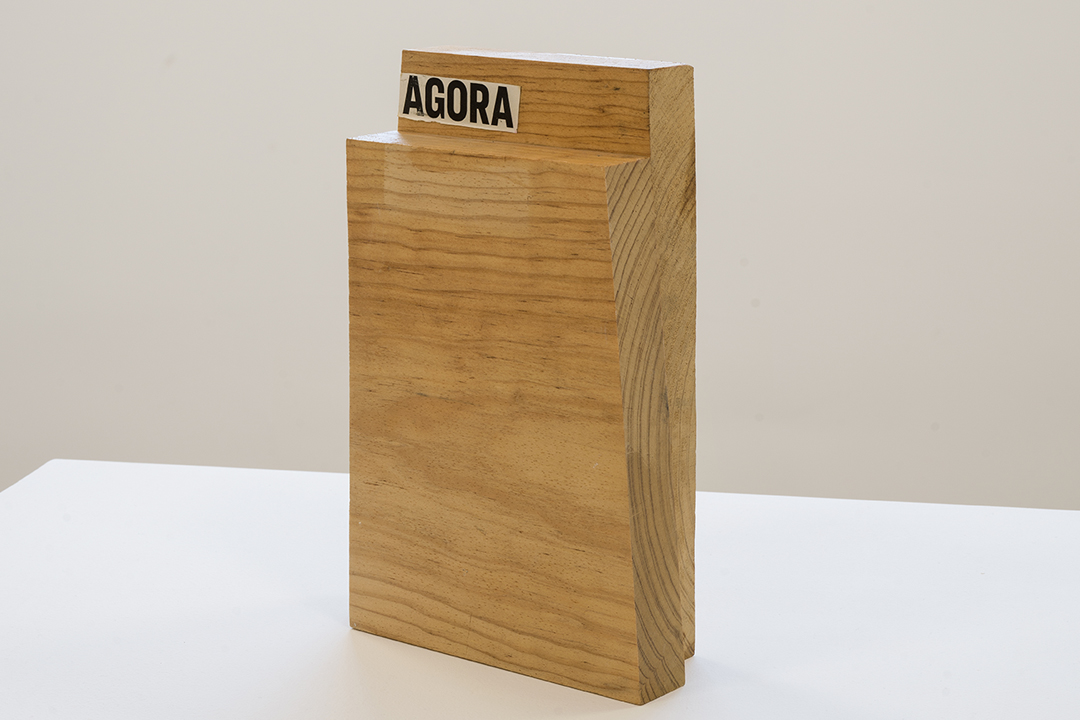
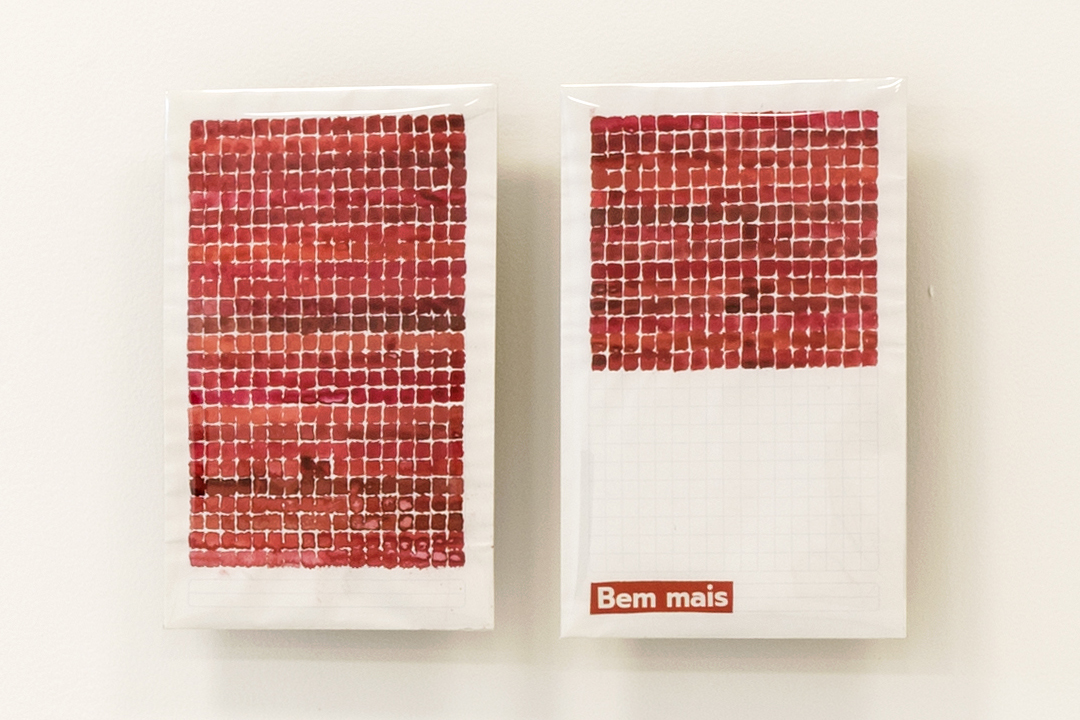
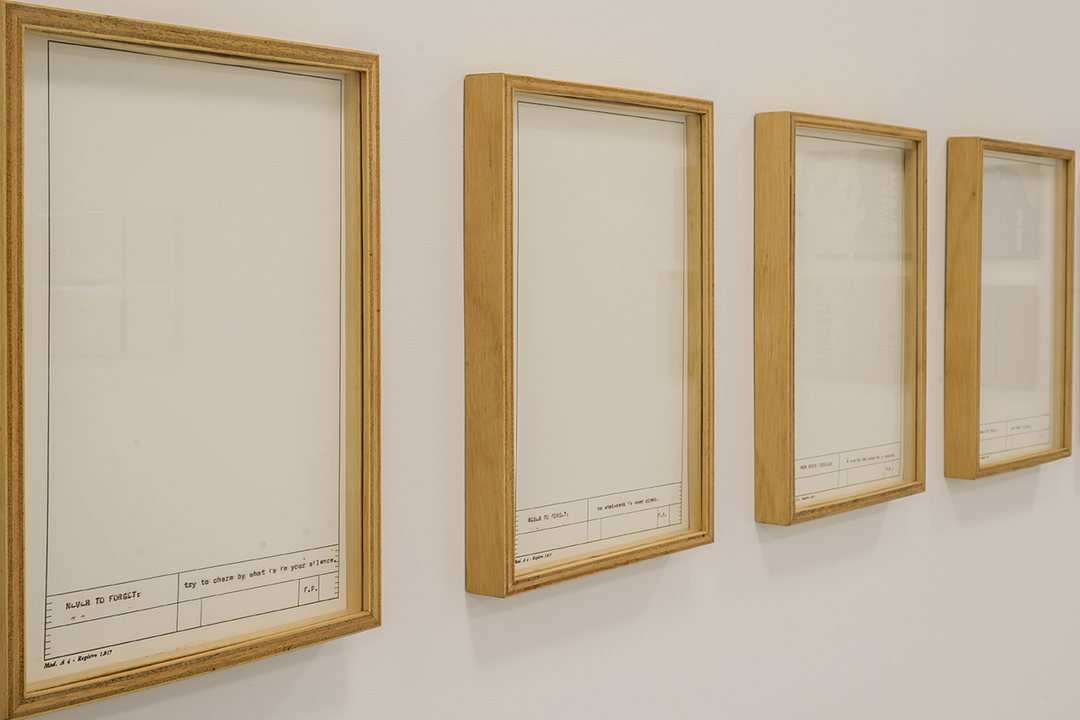






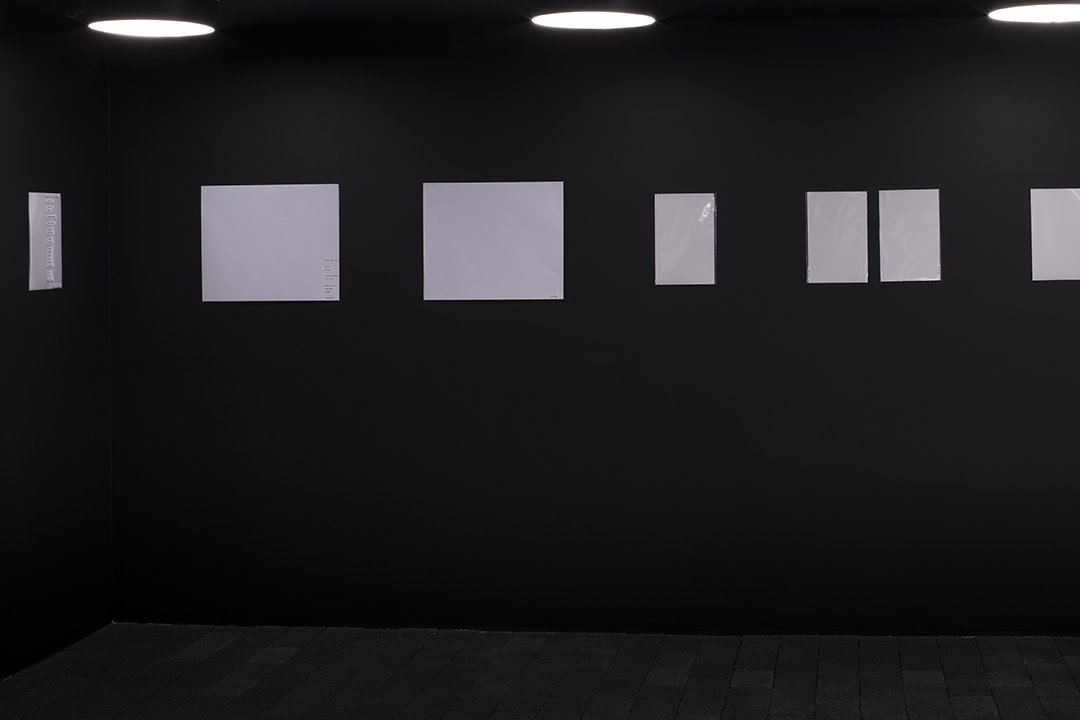
ainda sempre ainda
Solo show, Museu Paranaense, Curitiba, 2022



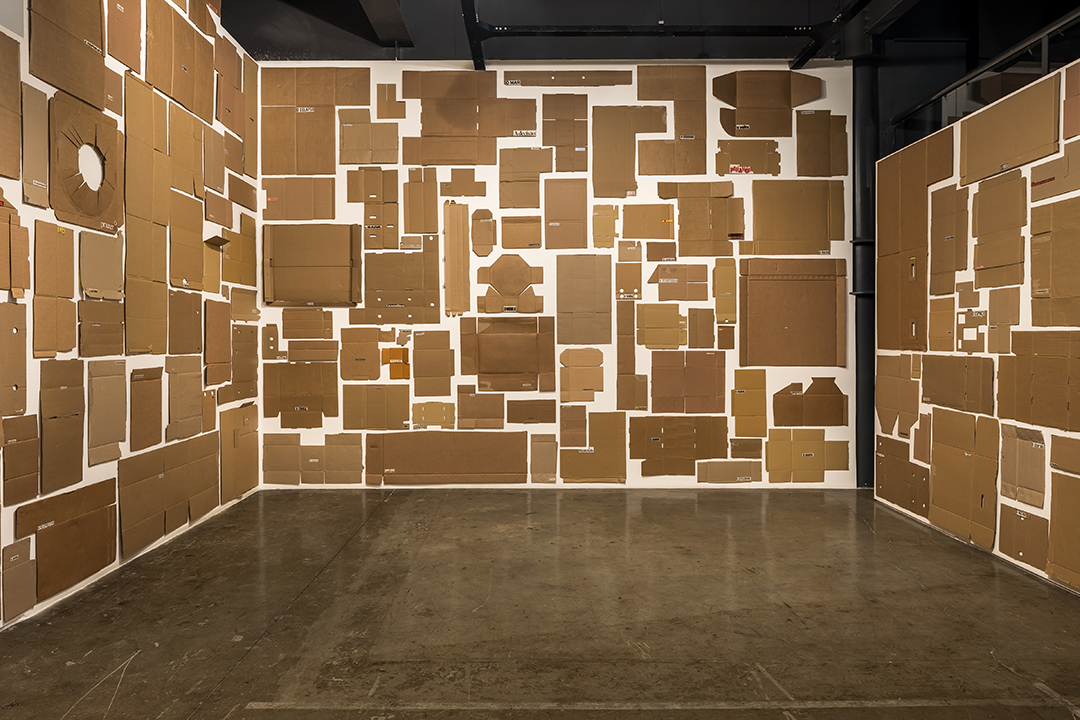

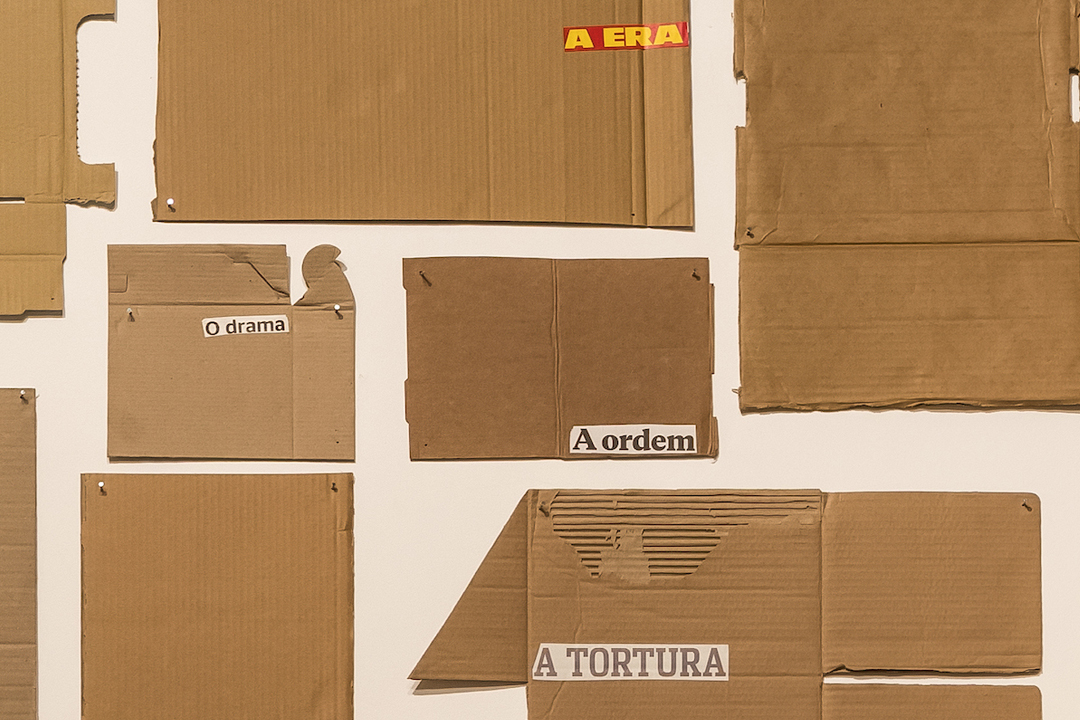



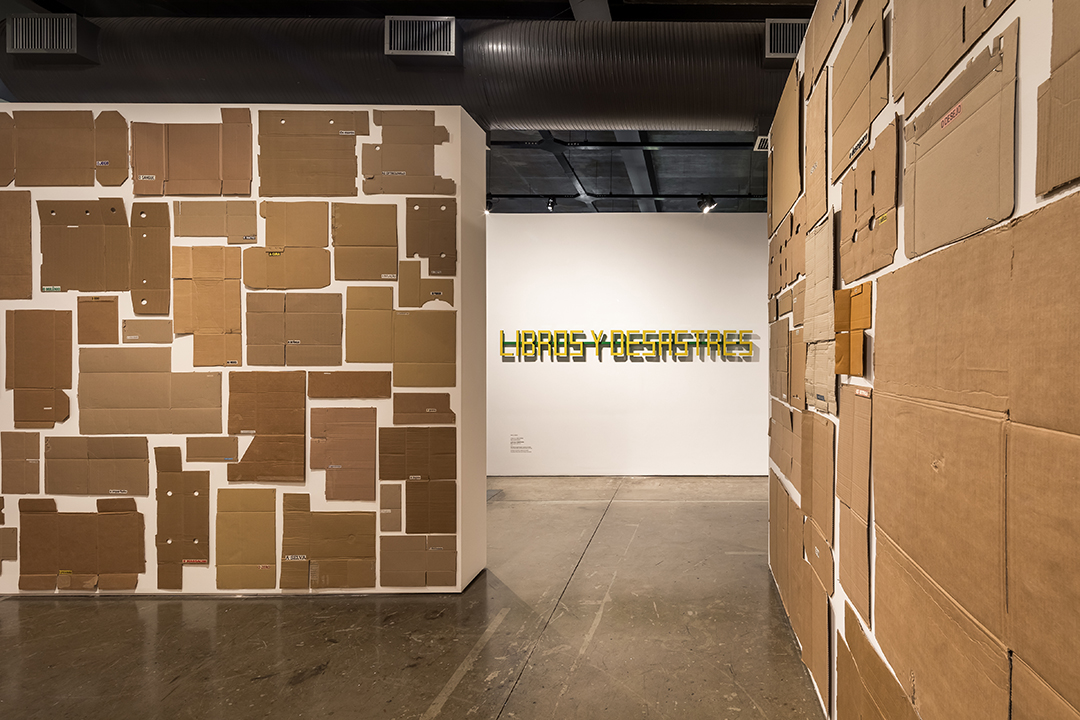




“(...) Marilá Dardot’s entire exhibit, ainda sempre ainda (still ever still) refers to this sensitive region of the present and forges a relationship with the field of language. While it is true that we are traversed by words every day – on Internet portals, in social media, WhatsApp groups, newspapers, magazines, books – it is also the case that these words seem worn out, debilitated in meaning, weight and consequence. For this reason, they appear here as if removed from their original positions and uses. And thus, they emerge - cropped, edited, pasted, approximated, torn, painted - so that, from these twists and turns, they can again make meaning, in the full sense of the term. And be set into action. (...) In all the works that appear here, simple materials, ones that can be found in daily life, are used. This is not coincidental. It seems to be saying that we should already begin to put these other narratives together, with whatever we have at hand, in light of today’s urgencies. This is the meaning that Marilá Dardot weaves into each of her works, connection between word and action; she asserts, critically and poetically, that to forge other uses for language is a way to refuse subjugation to the continuous failings of the present, and to sow other ways to imagine the future.”
* Excerpt from text by Luisa Duarte on the exhibition.
Exhibition catalogue︎︎︎
“(...) Toda a exposição ainda sempre ainda, de Marilá Dardot, toca nessa região sensível do presente e estabelece uma relação com o campo da linguagem. Se é verdade que somos atravessados por palavras cotidianamente – nos portais da Internet, nas redes sociais, nos grupos de WhatsApp, nos jornais, nas revistas, nos livros – também é fato que essas parecem a cada dia mais gastas, menos fortes em sentido, peso, consequência. Por isso as palavras aparecem aqui desviadas de seus lugares e usos originais. Surgem agora recortadas, editadas, coladas, aproximadas, rasgadas, pintadas, para que, nesses reviramentos, possam voltar a dizer no significado pleno do termo. E, mais ainda, possam vir a agir. (...) Em todas as obras aqui reunidas comparece o uso de materiais simples, encontrados no cotidiano. Essa escolha não é acidental. Parece estar sendo dito aí que devemos começar a alinhavar essas outras narrativas desde já, com o que temos à mão, à luz das urgências do presente. É nesse sentido que Marilá Dardot tece, em cada trabalho, um vínculo entre palavra e ação, afirmando crítica e poeticamente que estabelecer outros usos para a linguagem é um dos modos de não nos assujeitarmos ao fracasso ininterrupto do agora e, assim, irrigarmos outras imaginações para o por vir.”
* Trecho do texto de Luisa Duarte sobre a exposição.
Catálogo da exposição︎︎︎
ainda sempre ainda
Solo show, Galeria Vermelho, São Paulo, 2022



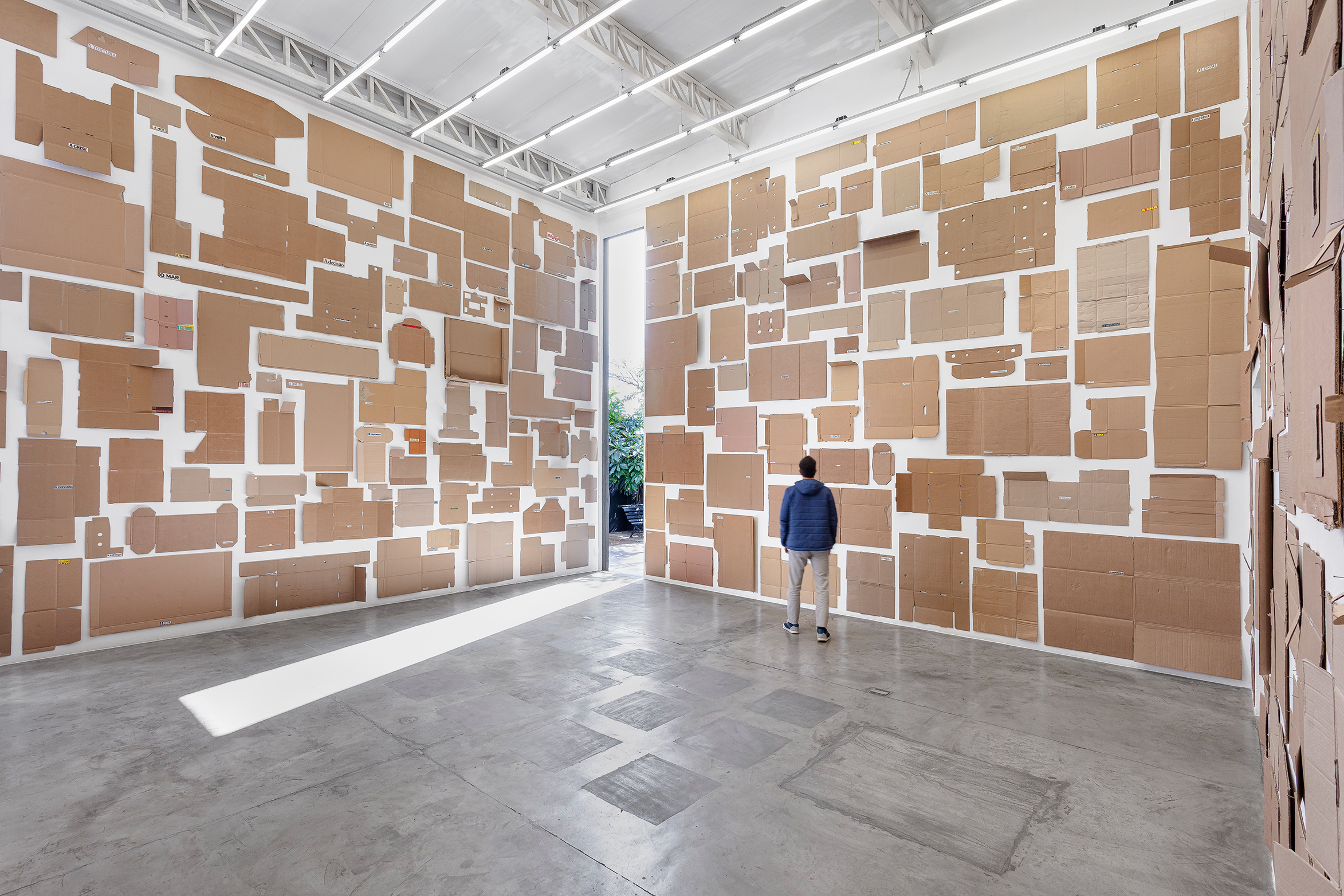
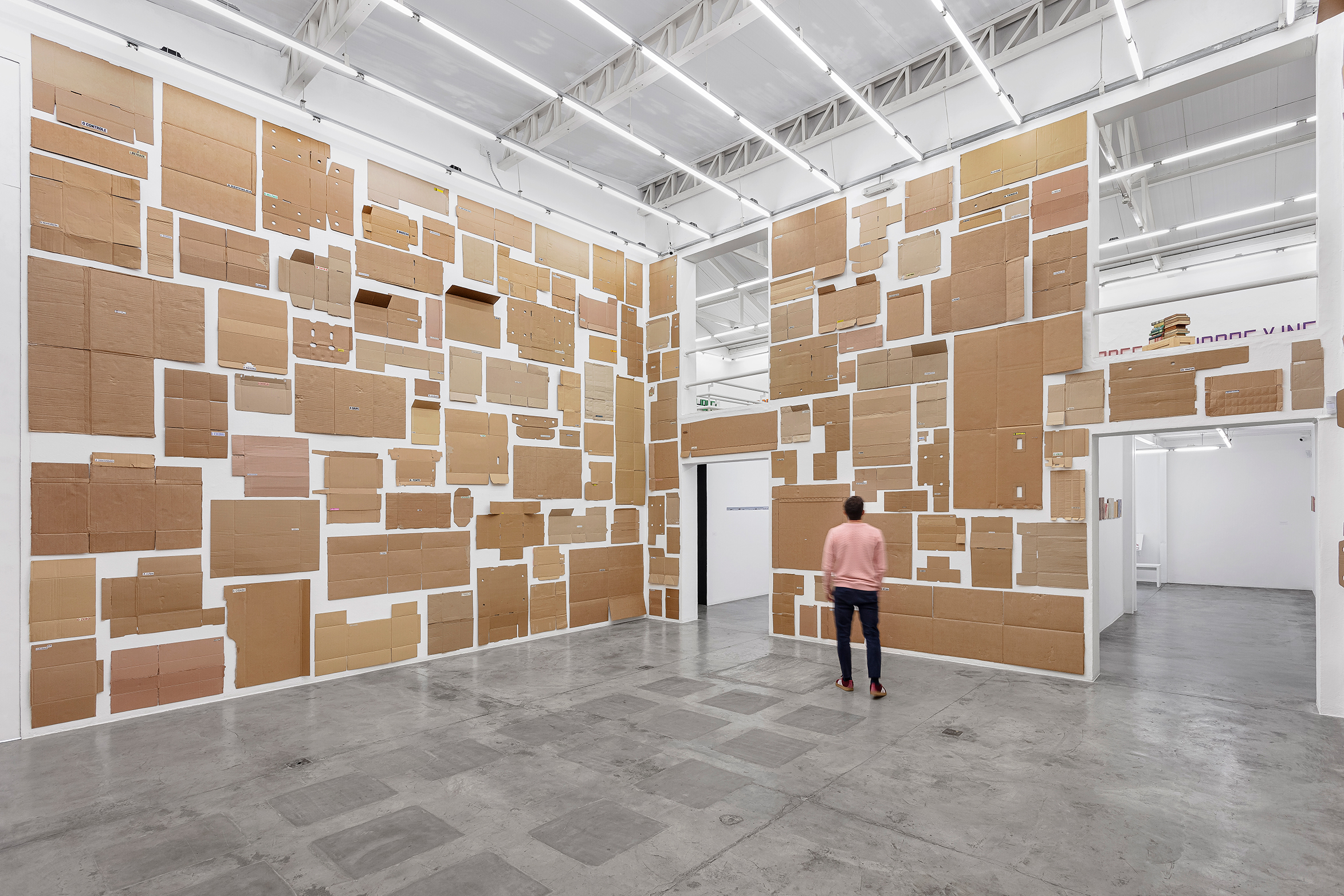



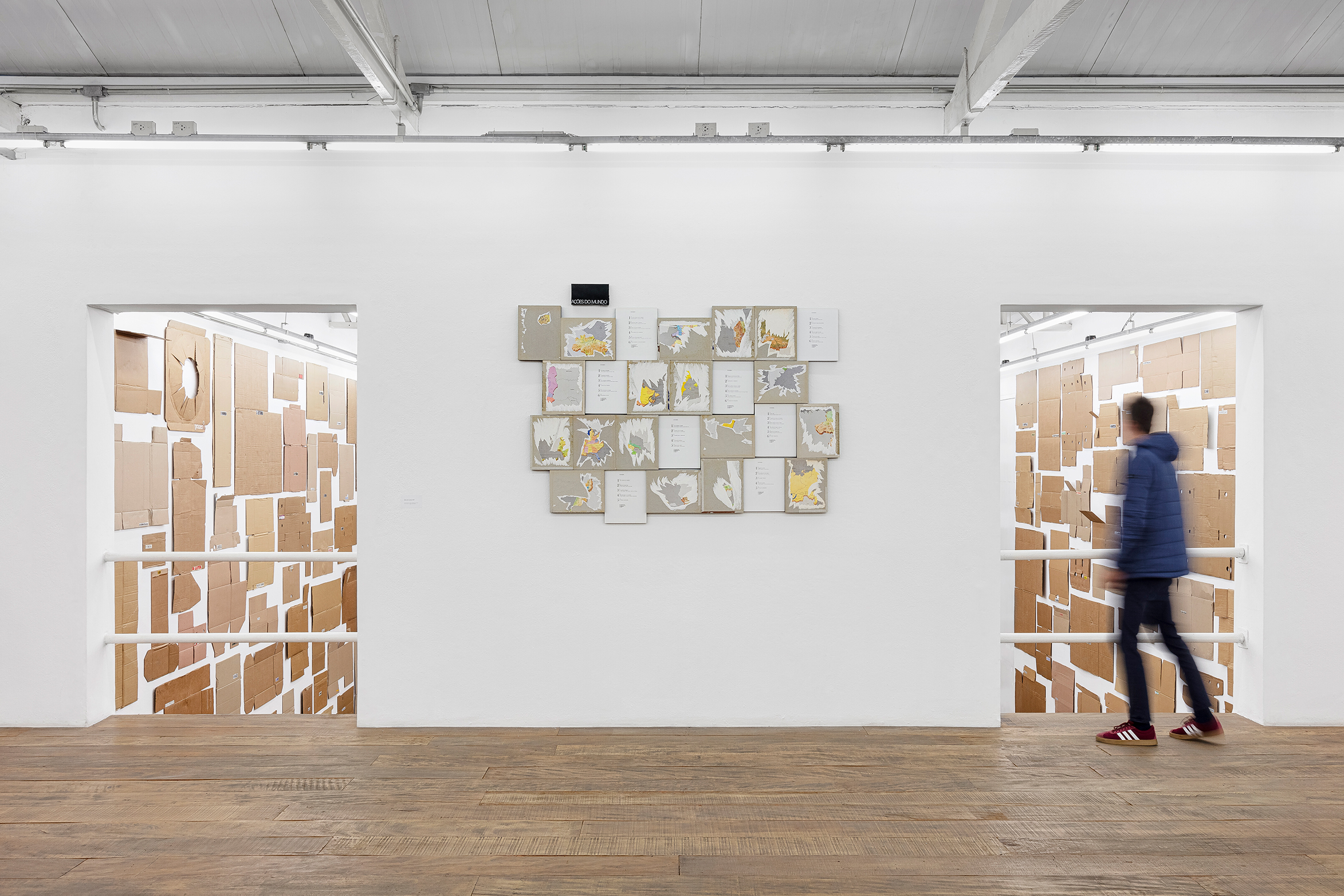
Marilá Dardot, represented by Vermelho since it ́s founding in 2002, occupies the gallery’s façade and main building with her 9th solo exhibit at the venue, ainda sempre ainda (still ever still).
In ainda sempre ainda, Dardot’s painting on Vermelho ́s façade monumentalizes the words AINDA (still) and SEMPRE (ever) as a layering of meanings via semantic wordplay. The two adverbs are powerful modifiers of sentences and meanings and yet stagnant when devoid of verbs.
In the installation Modelo para armar (Model kit) that occupies the gallery's main room, nouns cut from magazines published in Brazil since 1973 (the artist's birth year) are glued onto fragments of cardboard boxes, which can no longer be reassemble as boxes. The concepts of historical, political, affective, relational narratives and language itself detour into crisis and are there like a puzzle, to be reassembled, rearranged, resignified.
“The temporal inflection in the exhibition title invokes, at once, the labor of memory. In between figure and ground, clarity and opacity, Marilá Dardot’s gesture is one described by Walter Benjamin: ‘It is about appropriating something dangerous, which clamors to repeat itself with violence. The strength of this artist-like act of reconfiguring the world and time is precisely where repetition can take on new historical and poetical meanings,’”
* Excerpt from text by Bianca Dias on the exhibition︎︎︎
Marilá Dardot, representada pela Vermelho há 20 anos, ocupa a fachada e o prédio principal da galeria com ainda sempre ainda, sua 9a individual no espaço.
Em ainda sempre ainda, Dardot cria na fachada da Vermelho, uma pintura que monumentaliza as palavras AINDA e SEMPRE enquanto uma sobreposição de sentidos por via de um jogo semântico. Os dois advérbios têm o poder de modificar frases e sentidos, mas, desprovidos de verbos, permanecem estagnados.
Na instalação Modelo para armar, que ocupa a sala principal da galeria, substantivos cortados de revistas publicadas no Brasil desde 1973 (ano de nascimento da artista) são cola¬dos sobre fragmentos de caixas de papelão, que já não funcionam para remontar as caixas originais. Os conceitos de narrativas históricas, políticas, afetivas, relacionais e a própria linguagem entram em crise e estão aí como um quebra-cabeças, a serem remontados, rearranjados, ressignificados.
“A inflexão temporal que se apresenta desde o título da exposição invoca, de imediato, o trabalho da memória. Entre figura e fundo, clareza e opacidade, o gesto de Marilá Dardot é aquele assinalado por Walter Benjamin: ‘Trata-se de se apropriar de algo perigoso, que clama por se repetir com violência. É justamente na força desse ato de artista de reconfigurar o mundo e o tempo que a repetição pode ganhar novos sentidos históricos e poéticos’”
* Trecho do texto de Bianca Dias sobre a exposição︎︎︎
A terceira margem do rio e as outras margens
Anozero’19 Bienal de Arte Contemporânea de Coimbra, 2019
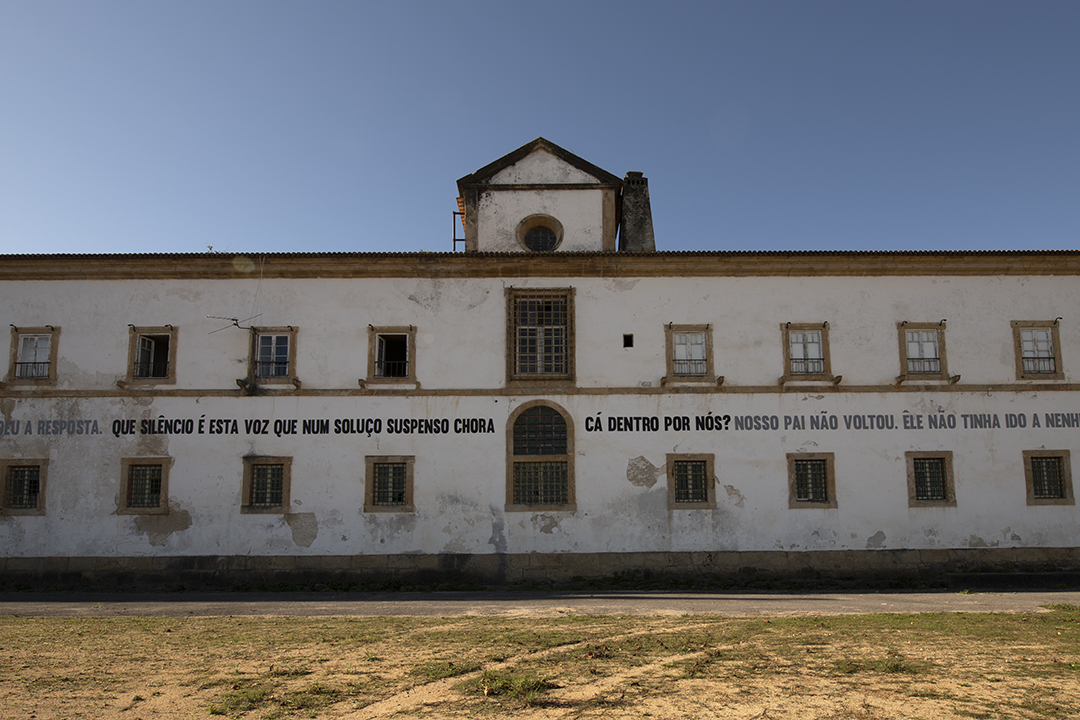




Site specific | Text over façade
Dialogue between João Guimarães Rosa’s character in “A terceira margem do rio” (1962) and excerpts of Natalia Correia’s poem “Ricochete” (1958), placed on the façade of Santa Clara-a-Nova Convent.Comissioned work for Anozero’19 Bienal de Arte Contemporânea de Coimbra, in Portugal.
Diálogo entre a personagem de João Guimarães Rosa em “A terceira margem do rio” (1962) e trechos do poema “Ricochete” (1958), da portuguesa Natalia Correia, colocados na fachada do convento de Santa Clara-a-Nova. Obra comissionada para a Anozero’19 Bienal de Arte Contemporânea de Coimbra, em Portugal.



Ir y volver
XIII Bienal de la Habana, Matanzas, 2019
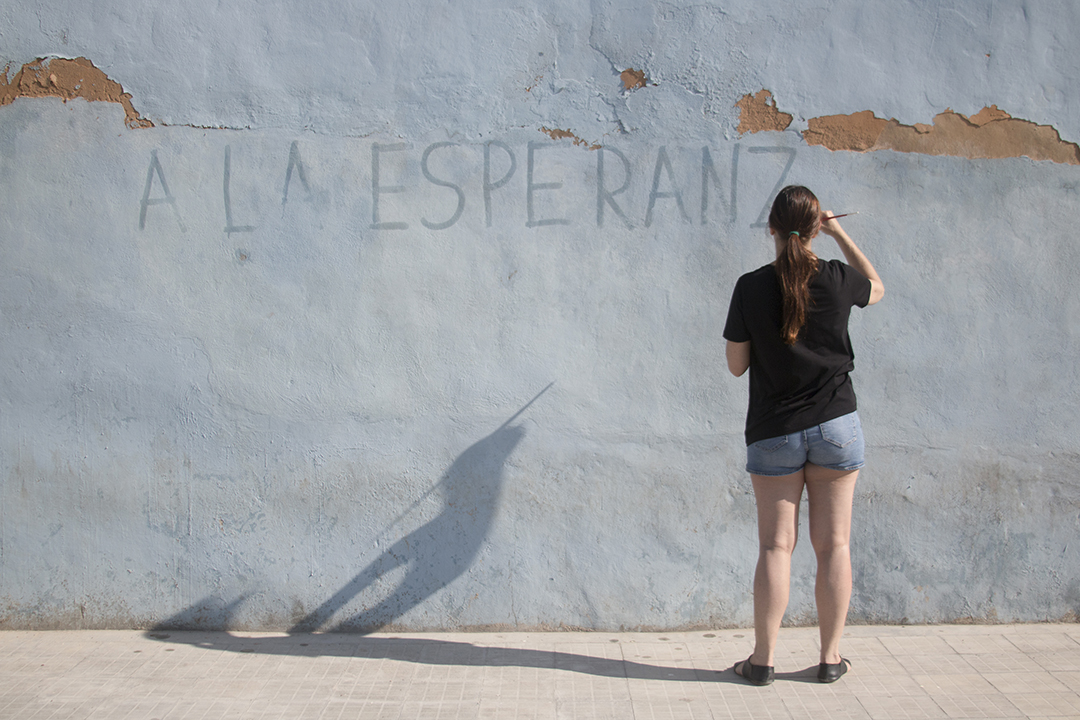
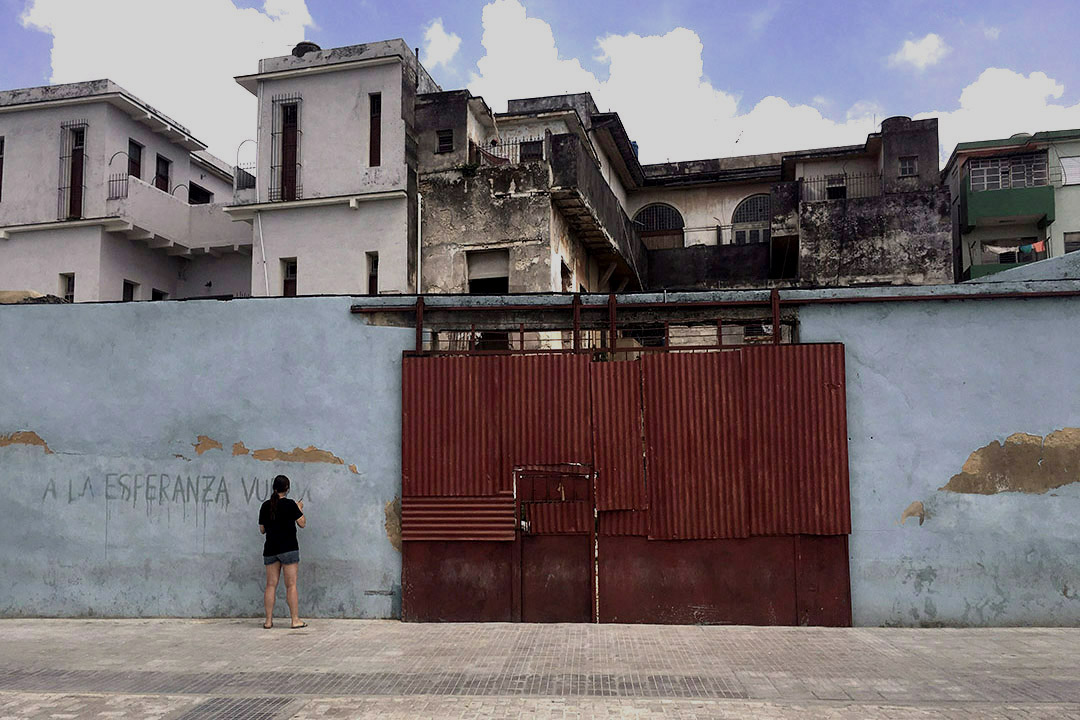

Performance
I write with water the sentence “A la esperanza vuelvo” on a light blue wall by the river. As the sun erases the words, I keep writing it over and over again, until I run out of water. Ir y volver was first presented as a performance in Matanzas, Cuba, for the XIII Bienal de La Habana. “A la esperanza vuelvo” is a verse by Carilda Oliver Labra, a Cuban poet who has always lived there.
Escrevo com água a frase “A la esperanza vuelvo” sobre uma parede azul-clara junto ao rio em Matanzas, Cuba. Enquanto o sol apaga as palavras, continuo escrevendo repetidas vezes, até acabar água. Ir y volver foi apresentado pela primeira vez como uma performance na XIII Bienal de La Habana, em Matanzas, Cuba. “A la esperanza vuelvo” é um verso de Carilda Oliver Labra, poeta cubana que viveu lá toda sua vida.
“(...) por mais que Ir y Volver parta de um fragmento de poesia e fale, à primeira vista, de uma construção eterna da esperança, a duração limitada da performance – e, consequentemente, do vídeo – mostra a fragilidade dessa elaboração (...). É uma esperança que, nos tempos atuais, está cada vez mais sujeita à evaporação.”
* Trecho do texto de Nina Rahe︎︎︎
Lisbon blues
nanogaleria, Lisboa, 2018

“Lisbon blues is the title of the art installation in the nanogaleria, composed of around thirty boxes, which precisely reflects the markings that Lisbon bares in its contemporaneity. These boxes, as a whole, form a near mono-chromatic blueish blotch. Collected by the artist throughout the course of four months, they have not been subjected to any intervention or pictorial process. The blueish hue they all display is due, in fact, to the solar exposure they were subjected to throughout their existence on the window displays of small Lisbon shops. These boxes that have remained for years on display, and the resulting chromatic changes, are a reflection of the permanence/transience and sustainability/ erratic-change contradictions of the socioeconomic and political dynamics, be they at the neighborhood level, be they at city or country level. Just as the monochromatic hue of the boxes reveals an erasing of the colors that made up their identities – the last colors to resist solar exposure throughout time are blue and black – so do the recent and constant changes in the typical neighborhoods of Lisbon eliminate many of their sociocultural anchors and meeting points and spots of community relations, changing their sustainable urban dynamics in a drastic fashion.”
* Excerpt from text by Luisa Santos and Ana Fabíola Maurício on the installation
“Lisbon blues é o título da instalação composta por cerca de trinta caixas na nanogaleria que reflete, precisamente, as marcas que Lisboa mostra na contempo- raneidade. Estas caixas, em conjunto, formam uma mancha quase monocromática azulada. Coleccionadas pela artista ao longo de quatro meses, não foram sujeitas a qualquer intervenção ou processo pictórico. O tom azulado que todas ostentam deve-se, na verdade, à exposição solar a que foram sujeitas ao longo das suas vidas nas vitrines de pequenas lojas Lisboetas. Estas caixas que permaneceram durante vários anos nas vitrines e as suas consequentes alterações cromáticas são um reflexo das contradições perenidade-efemeridade e de sustentabilidade-inconsistência das dinâmicas socioeconómicas e políticas quer à escala de bairro, quer da cidade e do país. Do mesmo modo que o tom monocromático das caixas revela um apagamento das cores que compõem as suas identidades – as últimas cores a resistir à exposição solar ao longo do tempo são o azul e o preto – também as recentes constantes mudanças nos bairros típicos de Lisboa eliminam muitas das suas âncoras socioculturais e pontos de encontro e de relação da comunidade, alterando de forma drástica a dinâmica urbana sustentável dos mesmos.”
*Trecho do texto de Luisa Santos e Ana Fabíola Maurício sobre a instalação
Lisbon Blues, por Luisa Santos e Ana Fabíola Maurício (Português)︎︎︎
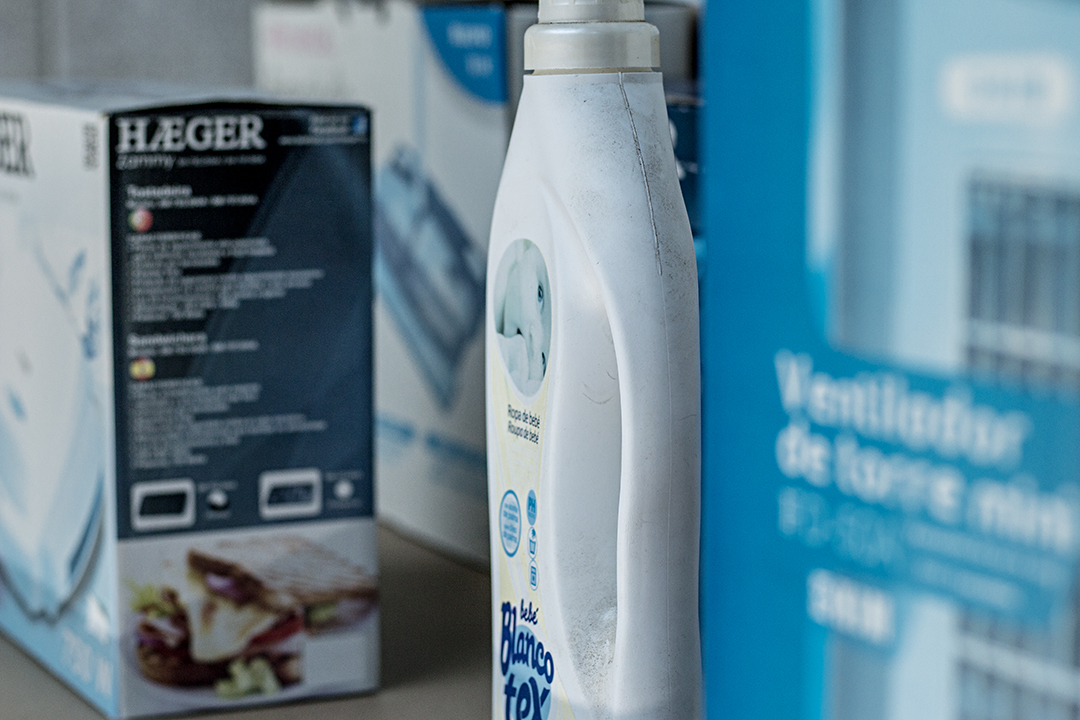

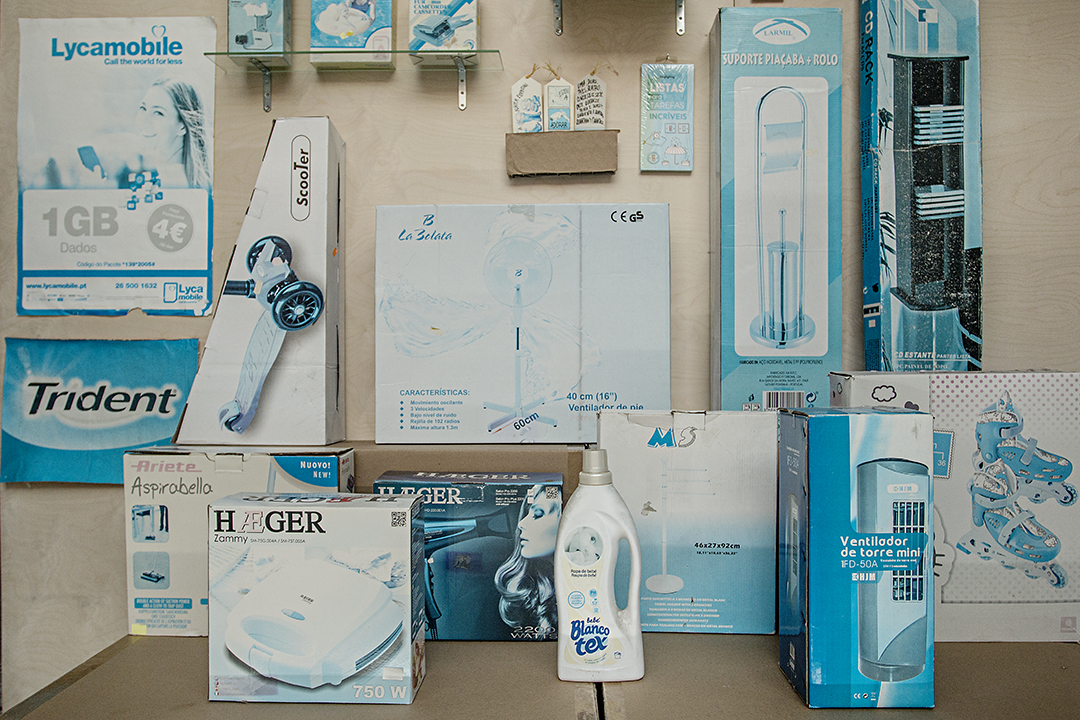

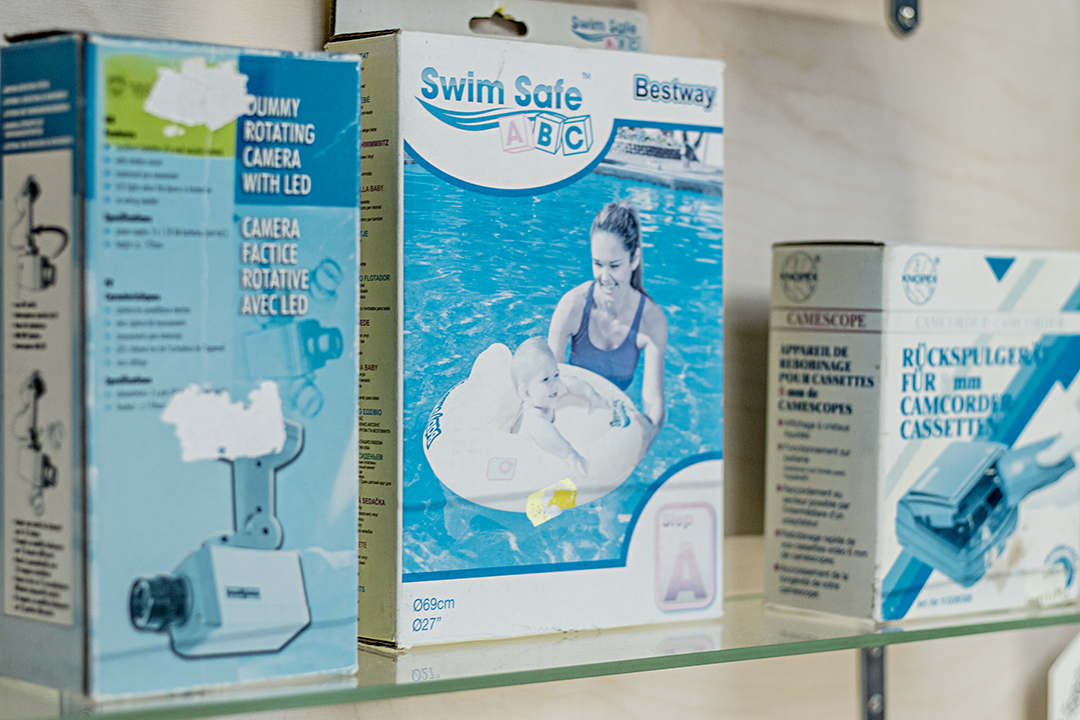

Contramão
MitoMotim, Galpão VB, São Paulo, 2018

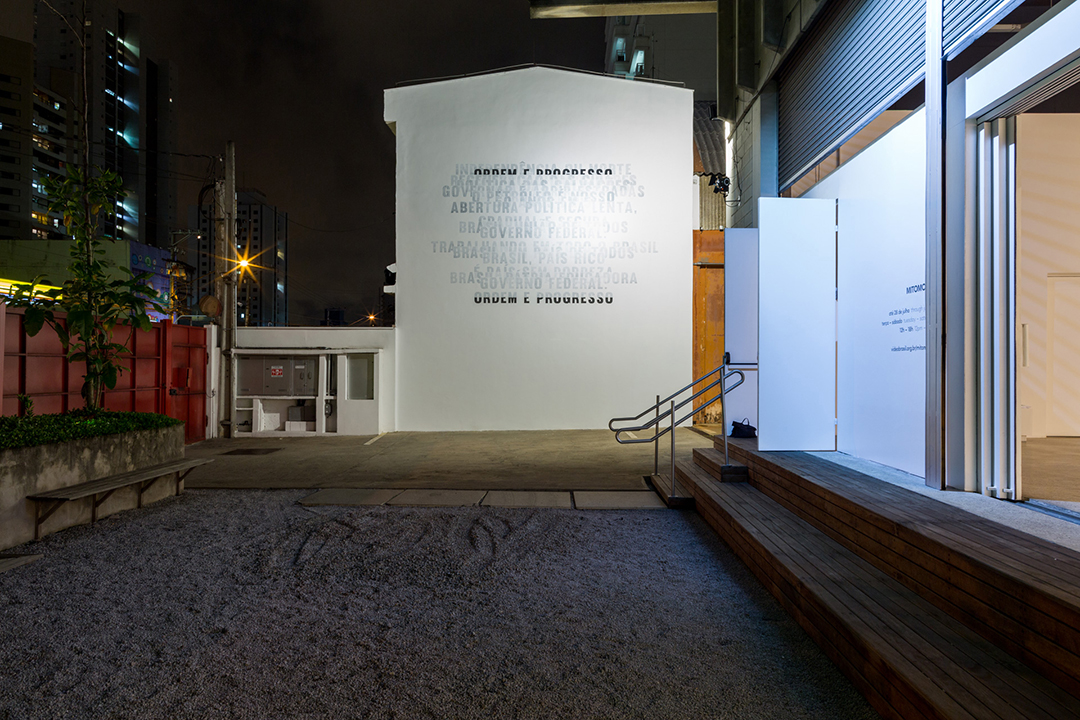
Mottos of Brazilian governments from 1822 to 2018 are the matrix of Contramão (Wrong way). The mottos are painted on the wall, semi-veiled and superimposed in chronological order. The second motto, “Ordem e progresso” (Order and progress), is only half veiled, splicing up with the last 2016 motto (adopted when Michel Temer assumed the presidency of the country after the impeachment of Dilma Rousseff). Comissioned work for the exhibition MitoMotim at Galpão VB, São Paulo.
Os lemas de governos brasileiros de 1822 a 2018 são a matriz do trabalho. Uns sobre os outros, em ordem cronológica, os lemas são pintados sobre a parede, semi-velados e sobrepostos. O segundo lema, Ordem e progresso, é velado apenas pela metade, para emendar-se com o último, de 2016, adotado quando Michel Temer assumiu a presidência do país após o impeachment de Dilma Rousseff. Trabalho realizado sobre a empena do Galpão VB, São Paulo, para a exposição MitoMotim.
Bienvenidos
Solo show, Arredondo Arozarena, Ciudad de México, 2017
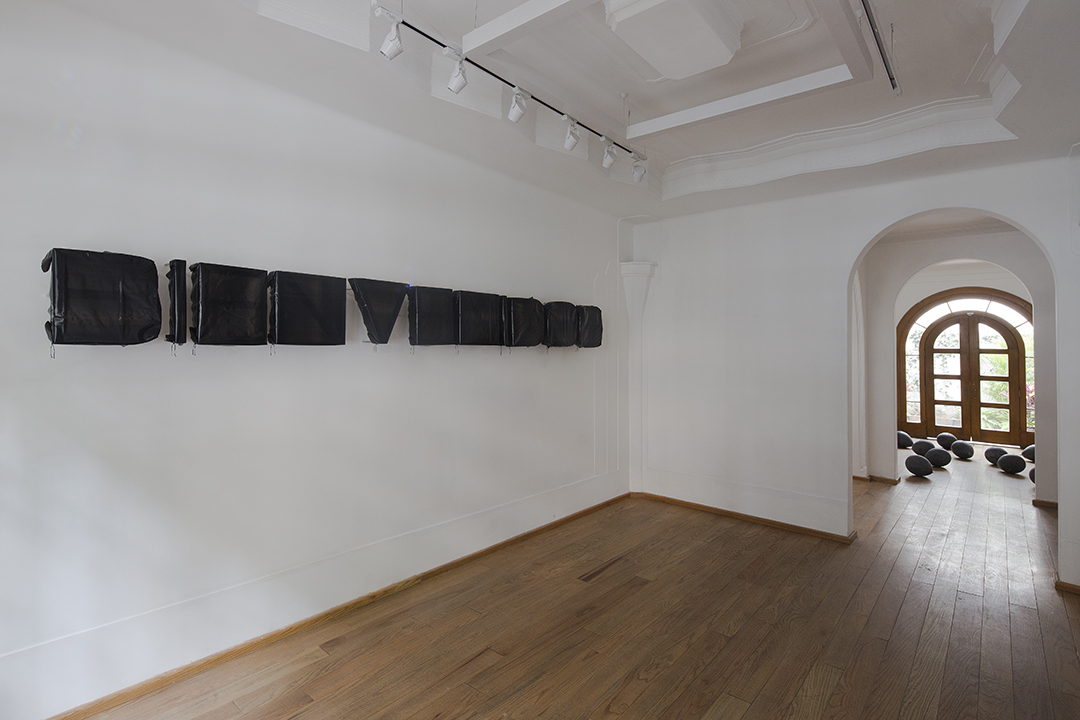
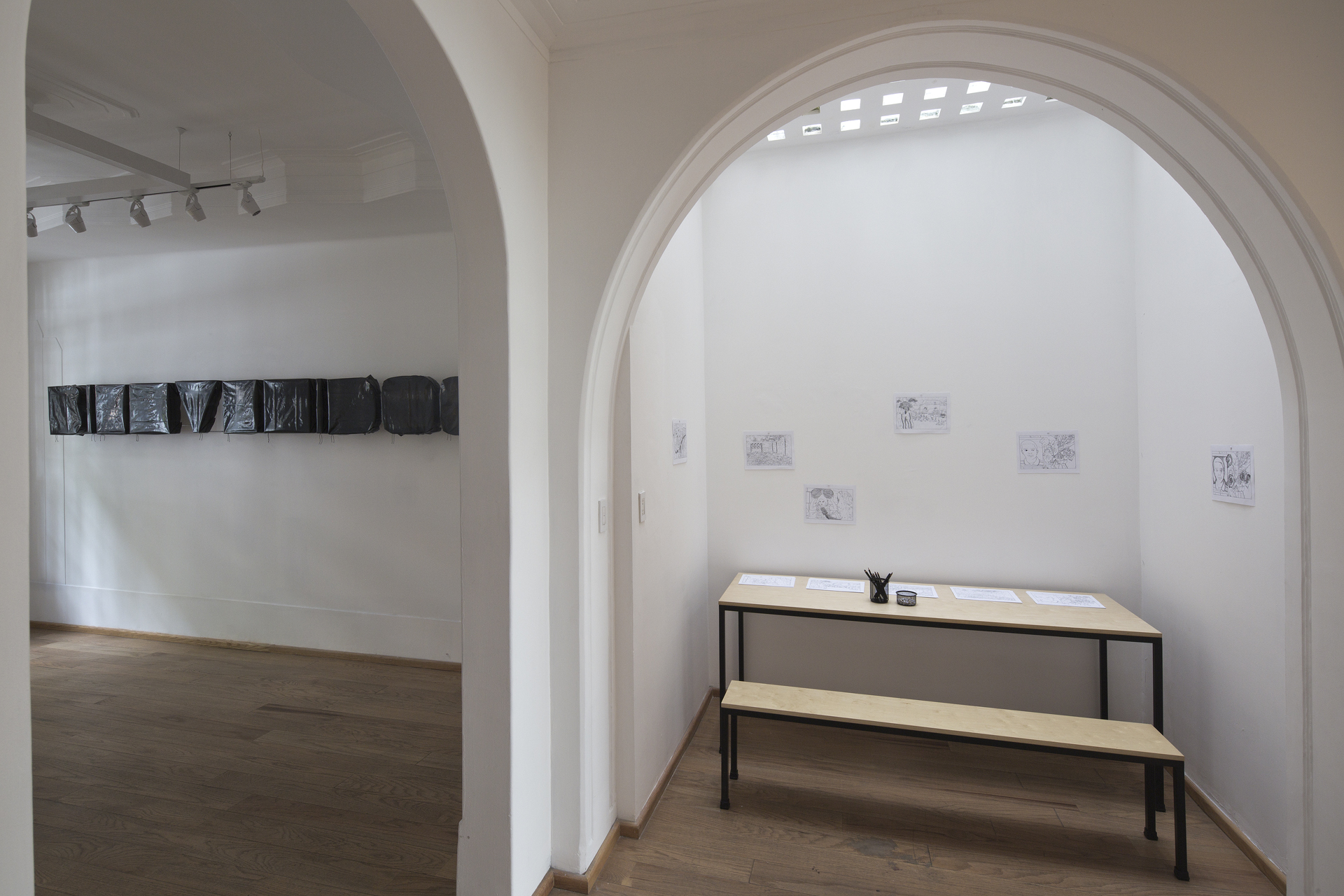




Exhibition pdf and text by Tatiana Cuevas︎︎︎
Review – Bienvenidos by Marilá Dardot, by Elliott Burns (English)︎︎︎
Interdito
Solo show, Galeria Filomena Soares, Lisboa, 2017











“For her first solo exhibition in Portugal, the artist developed a series of works that approaches the various dimensions of censorship on the levels of literary production and distribution in Portugal, generated from a selection of fifteen books written by female writers, playwrights and poets, that were forbidden and confiscated during the regime of the so-called Estado Novo (New State, from 1933 to 1945). Dardot occupies both exhibition spaces of Galeria Filomena Soares where she presents a new perspective on a number of themes and issues which have been defining her artistic practice since the mid 2000’s and explores the relationship between silence and Interdict, between the said and the unsaid, between poetry and politics.
The artist questions the right to decide what can be read and what cannot. She re-thinks the notion of the forbidden word and the silenced and unsaid phrases of a generation of female writers and militants of women’s rights on a crucial moment in the history of feminist emancipation. The exhibition investigates pertinent themes of contemporary society and the relations of power that structure it, from the view point of this female artist who has also inherited a culturally legacy profoundly marked by the Brazilian military dictatorship (1964-85).
Dardot legitimizes and reclaims the right to talk about the body, desire and sexual liberty of women; she questions the connections between women, culture and politics in the context of feminine representation in the literature and the culture of a country. The literary silence of women and the female condition in times of censorship and repression are the major themes of this exhibition, expressed in the works Dito (Said), Interdito (Interdict), O Leitor (The Reader), Biblioteca maldita (Damned Library), O exílio (Exile) and Canto (I sing, realized in collaboration with João Pimenta Gomes).” (adapted from the original curatorial text by Inês Grosso)
“Para a sua primeira exposição individual em Portugal, a artista desenvolveu uma série de trabalhos que abordam as várias dimensões da censura nos níveis de produção e distribuição literária em Portugal, gerados a partir de uma seleção de quinze livros escritos por escritoras, dramaturgas e poetisas, que foram proibidos e confiscados durante o regime do chamado Estado Novo (1933 a 1945). Dardot ocupa os dois espaços expositivos da Galeria Filomena Soares onde apresenta um novo olhar sobre uma série de temas e questões que têm definido a sua prática artística desde meados dos anos 2000 e explora a relação entre o silêncio e o interdito, entre o dito e o não dito, entre a poesia e a política.
A artista repensa a noção de palavra proibida e as frases silenciadas e não ditas de uma geração de escritoras e militantes dos direitos das mulheres em um momento crucial da história da emancipação feminista. A exposição investiga temas pertinentes à sociedade contemporânea e as relações de poder que a estruturam, do ponto de vista dessa artista que também herdou um legado cultural profundamente marcado pela ditadura militar brasileira (1964-85).
Dardot legitima e reivindica o direito de falar sobre o corpo, desejo e liberdade sexual das mulheres; ela questiona as conexões entre mulheres, cultura e política no contexto da representação feminina na literatura e na cultura de um país. O silêncio literário da mulher e a condição feminina em tempos de censura e repressão são os grandes temas desta exposição, expressos nas obras Dito, Interdito, O Leitor, Biblioteca maldita, O exílio e Canto (Canto, realizado em colaboração com João Pimenta Gomes).” (adaptado do texto original da curadoria de Inês Grosso)
Guerra do tempo
Solo show, Chácara Lane, Museu da Cidade, São Paulo, 2016


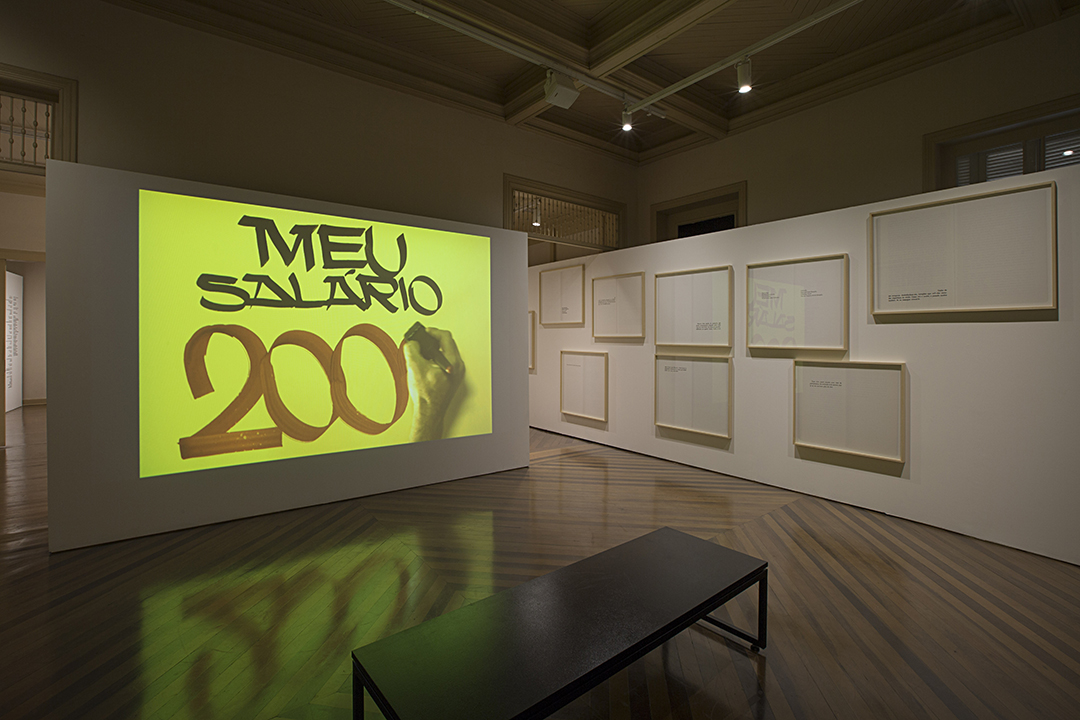

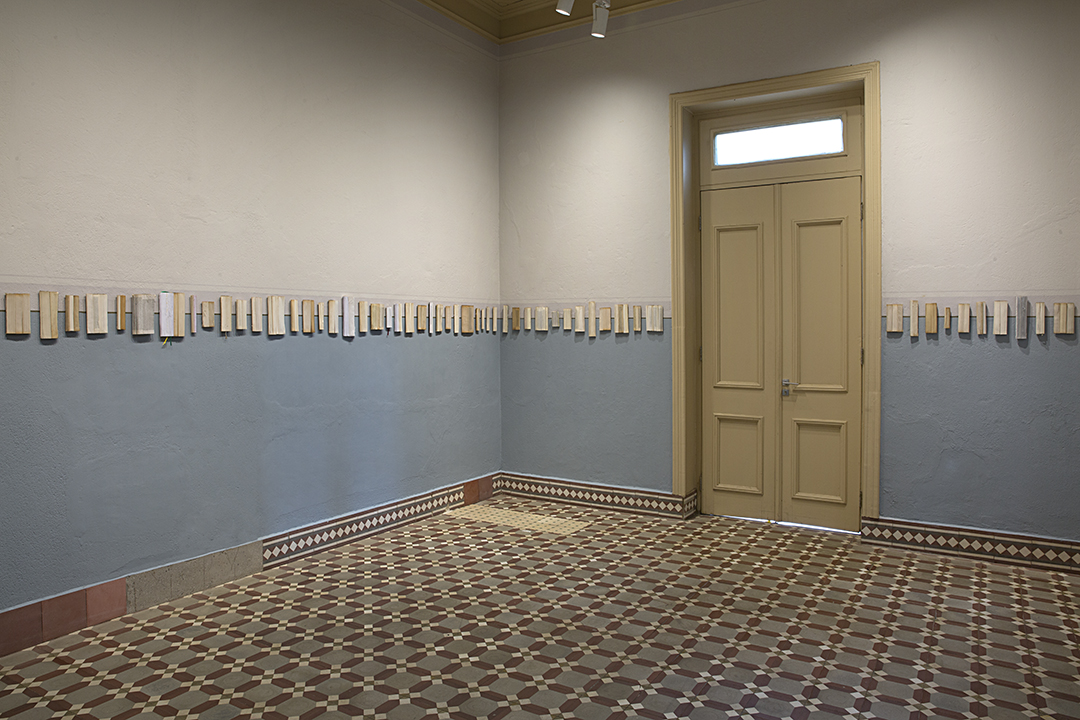
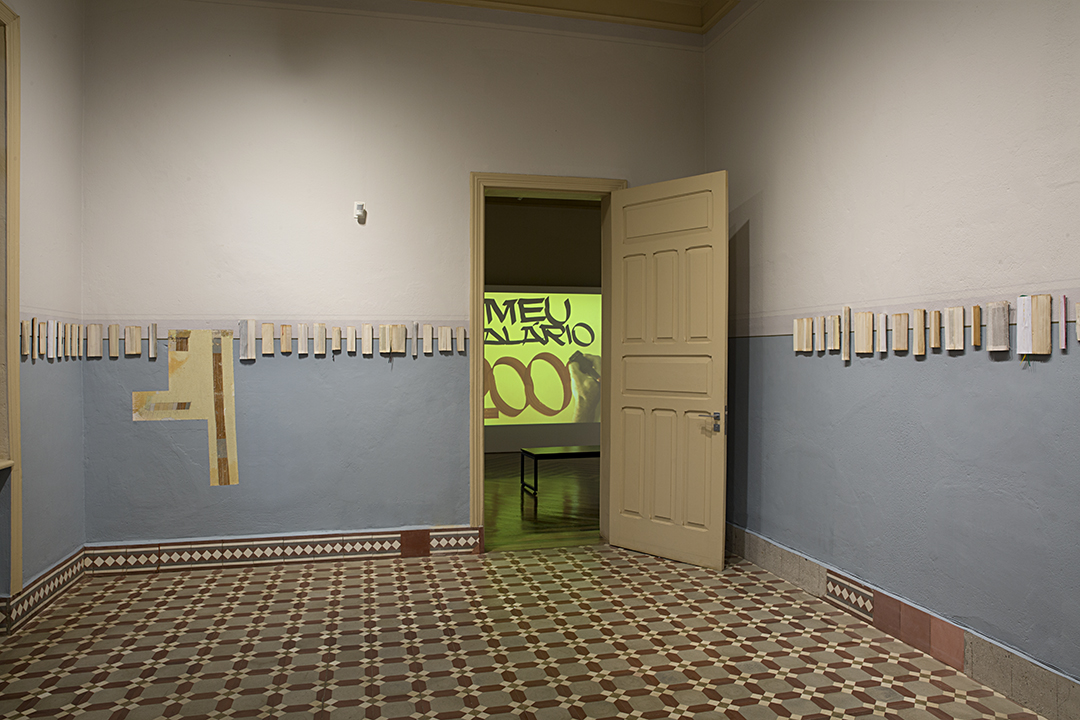



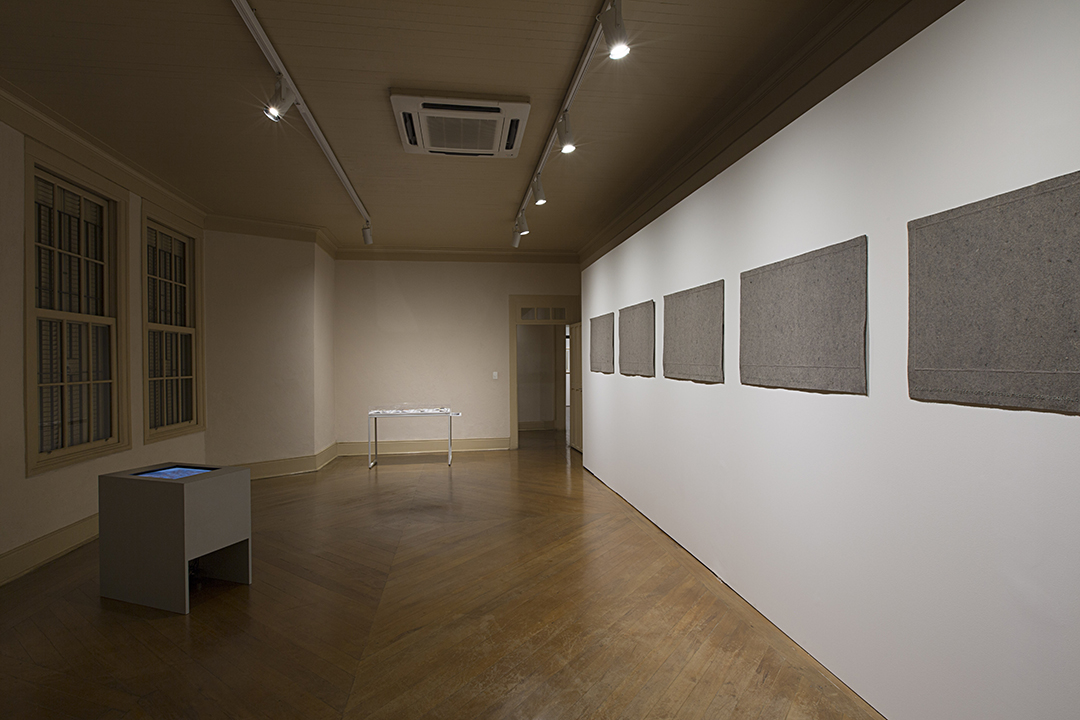

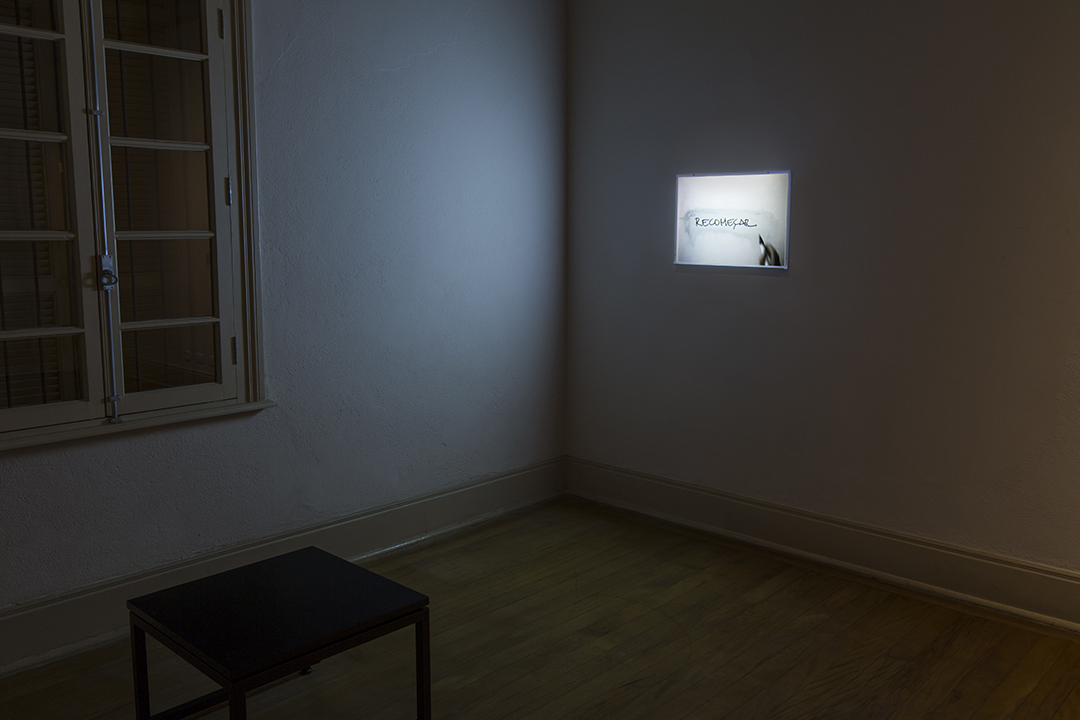
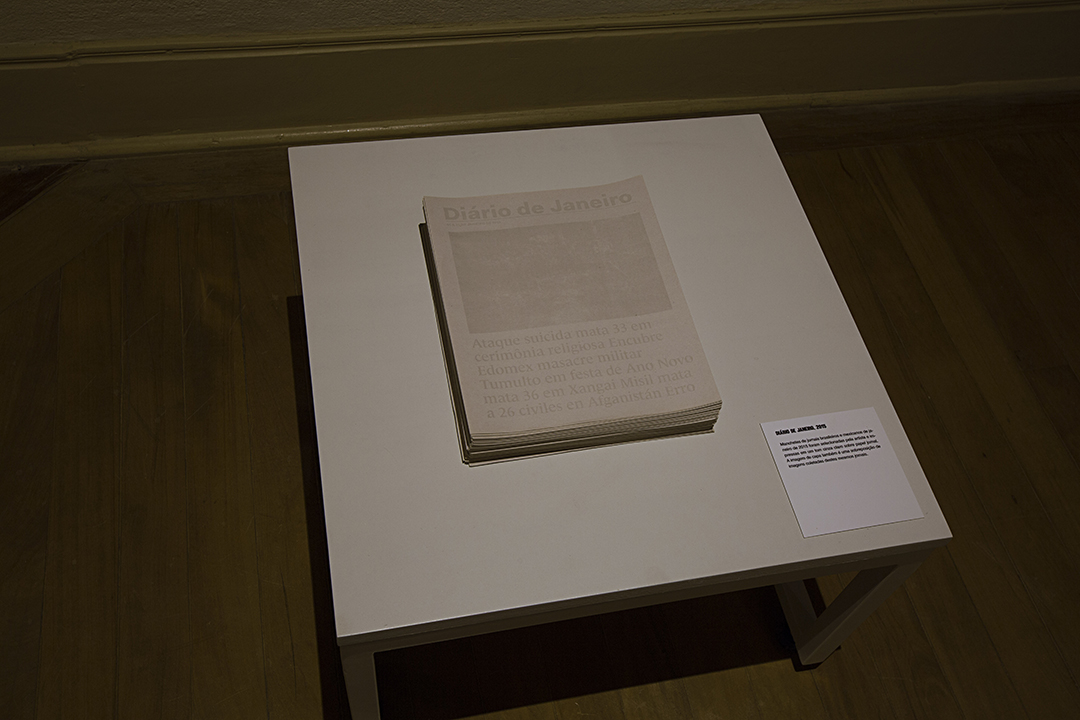


“Marilá Dardot’s War of Time took place at Chácara Lane in almost fifteen years of lapses, forgetfulness, failed, truncated or even silent communications, where poetic, semantic and power games are established as an ongoing exercise of vanishing and reinventing themselves. Like in [in her work] Guerra del Tiempo, it is the vacuum of elements already present in the world that the artist comes in by re-writing the meaning of things.” Douglas de Freitas, curator of the show.
Exhibition full catalogue︎︎︎
“A Guerra do Tempo de Marilá Dardot se reuniu na Chácara Lane, em quase quinze anos de lapsos, apagamentos, comunicações falhas, truncadas ou ainda silenciosas, em que jogos poéticos, semânticos e de poder se estabelecem em um constante exercício de apagar para se reinventar. Como em [seu trabalho] Guerra del tiempo, é no vácuo de elementos que já estão no mundo que a artista atua, reescrevendo o sentido das coisas.” Douglas de Freitas, curador da exposição.
Catálogo da exposição︎︎︎
Longe daqui, aqui mesmo
By Marilá Dardot & Fabio Morais
29a Bienal de São Paulo, São Paulo, 2010
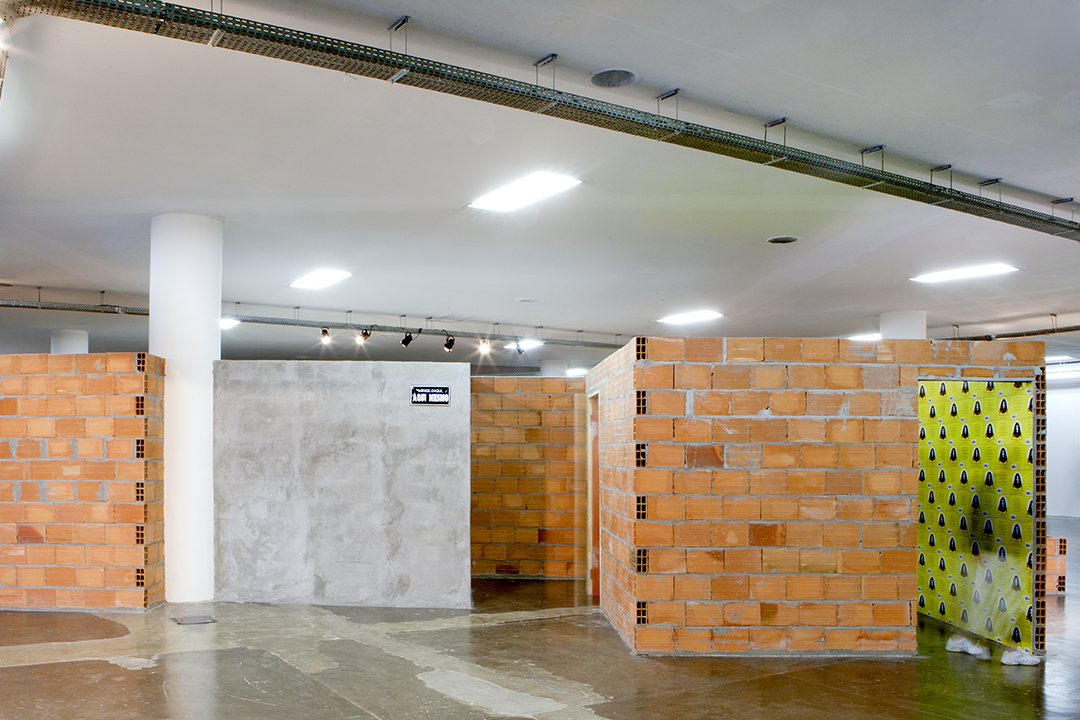


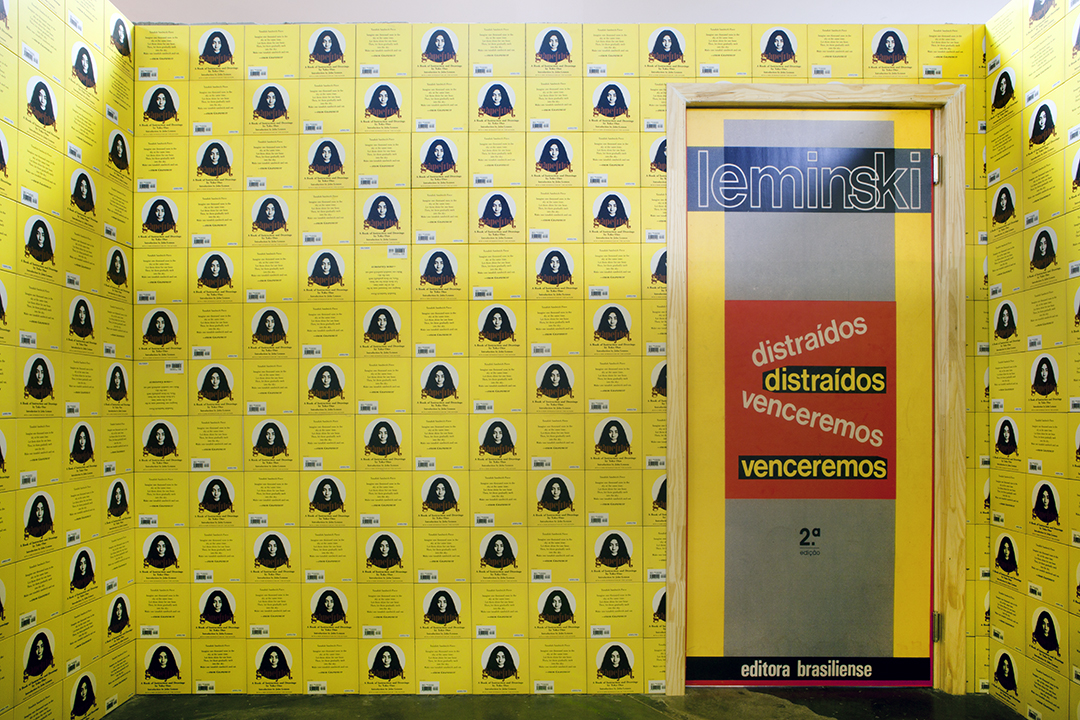
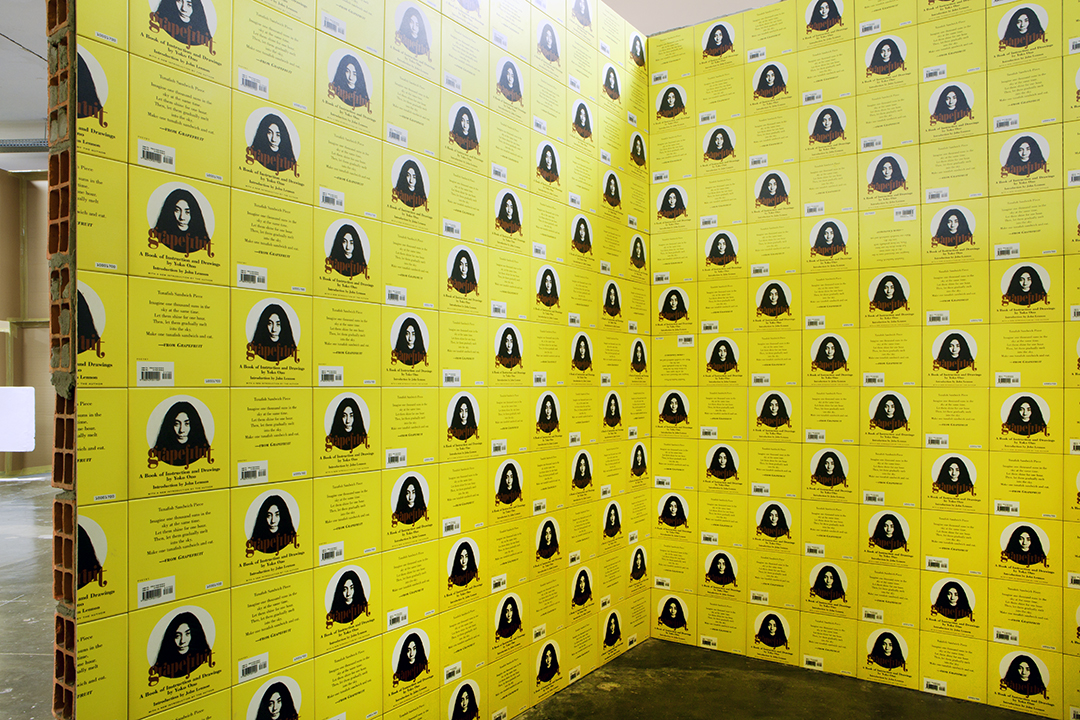
Site specific
Fabio Morais︎︎︎
Longe daqui, aqui mesmo (Far away, right here) was specially created by Marilá Dardot and Fabio Morais for the 29th São Paulo Biennial. Asked to imagine a library for the exhibition, the artists conceived an under construction maze-house, a place made of bricks, affections and tributes.The outside view is an unfinished building. When the visitor enters, he walks through some tiled and wallpapered rooms, crosses doors and steps on carpets with book covers images. Bricks and books are a construction element here (and literature, ideas, words).Reaching the library, the visitor is surprised by a white finished room where he finds books and chairs to enjoy reading.
The artists proposed three collections of books for the library: the answers of the 29th Bienal artists to the question: “Which book would you use to build your house?”; an open call for artists books; and, finally, a selection of contemporary literature. After the end of the exhibition, the books were donated to the Historical Archive Wanda Svevo, maintained by Fundação Bienal de São Paulo and open to public access.
Obra criada especialmente para a 29a Bienal de São Paulo. Os dois artistas foram convidados a imaginar uma biblioteca para a exposição, e o resultado é uma casa-labirinto em construção, um lugar feito de tijolos, afetos e homenagens.O que se vê de fora é um espaço inacabado, como uma casa/labirinto em construção. Quando o visitante entra, caminha através de cômodos revestidos por azulejos e papéis de parede, atravessa portas e pisa sobre tapetes com imagens de capas de livros. Aqui, tijolos e livros (e literatura, ideias, palavras) são elementos de construção.Ao abrir uma das três portas que dá acesso à biblioteca, o visitante é surpreendido por um quarto branco, acabado, onde encontra livros e cadeiras para sentar e apreciar a leitura.
Os artistas propuseram três coleções para a biblioteca: a resposta dos artistas que participam da 29a Bienal para a pergunta: “Com que livro você construiria sua casa?”; um convite aberto para o envio de livros de artistas, e, finalmente, uma seleção de literatura contemporânea feita pelos dois. Após o final da exposição, o acervo será doado ao arquivo histórico Wanda Svevo, da Fundação Bienal de São Paulo, tornando-se permanentemente disponível para consulta pública.